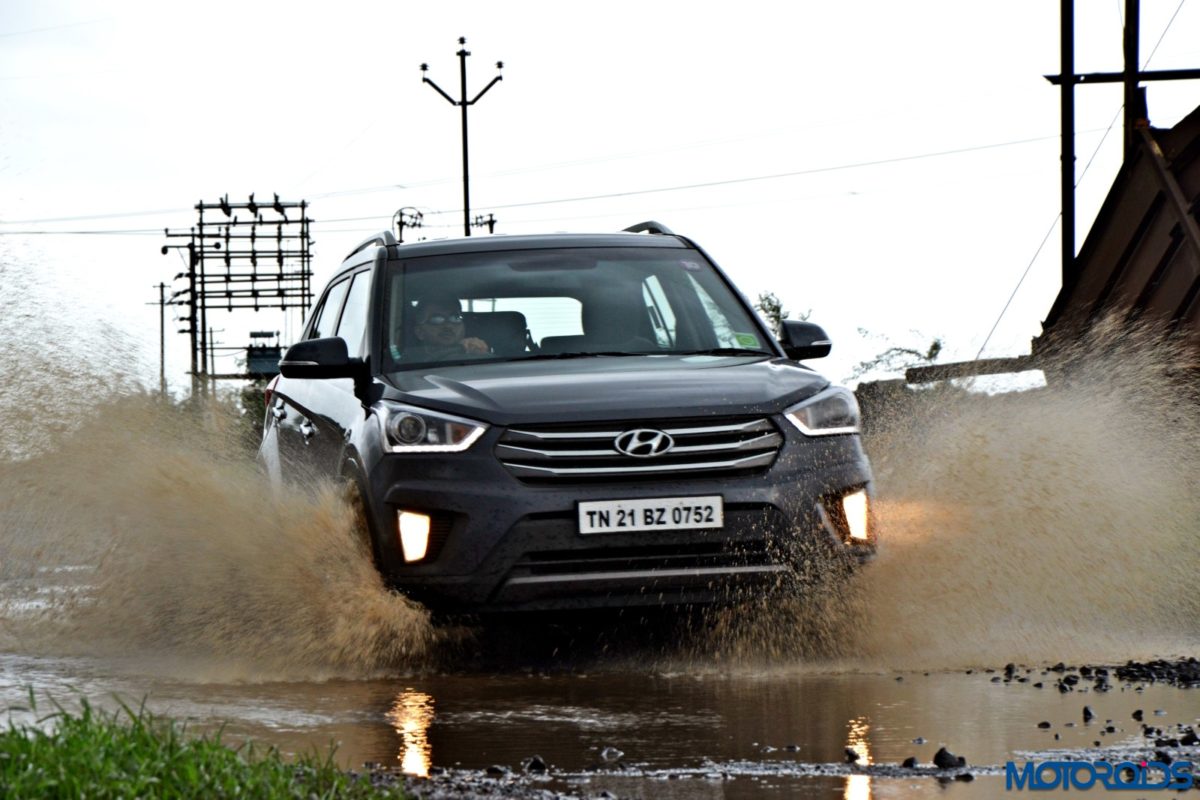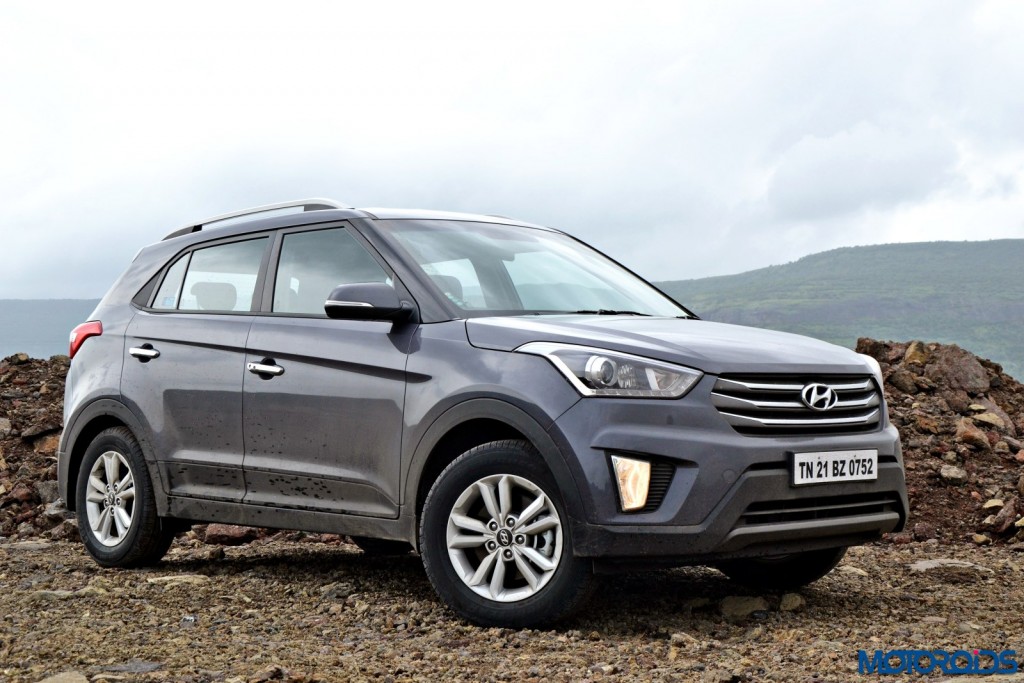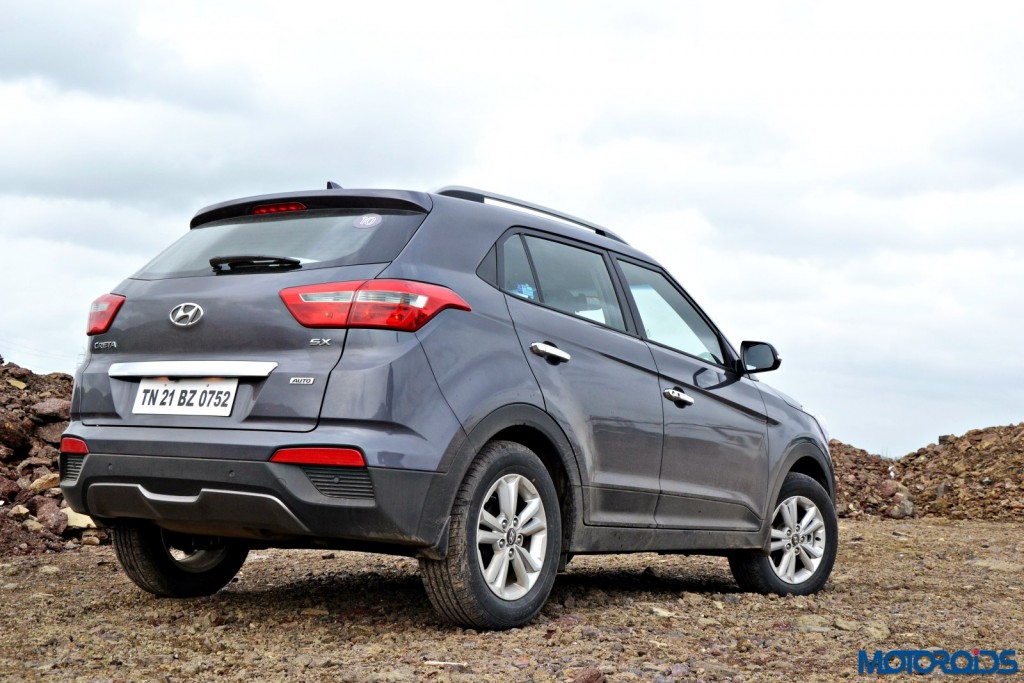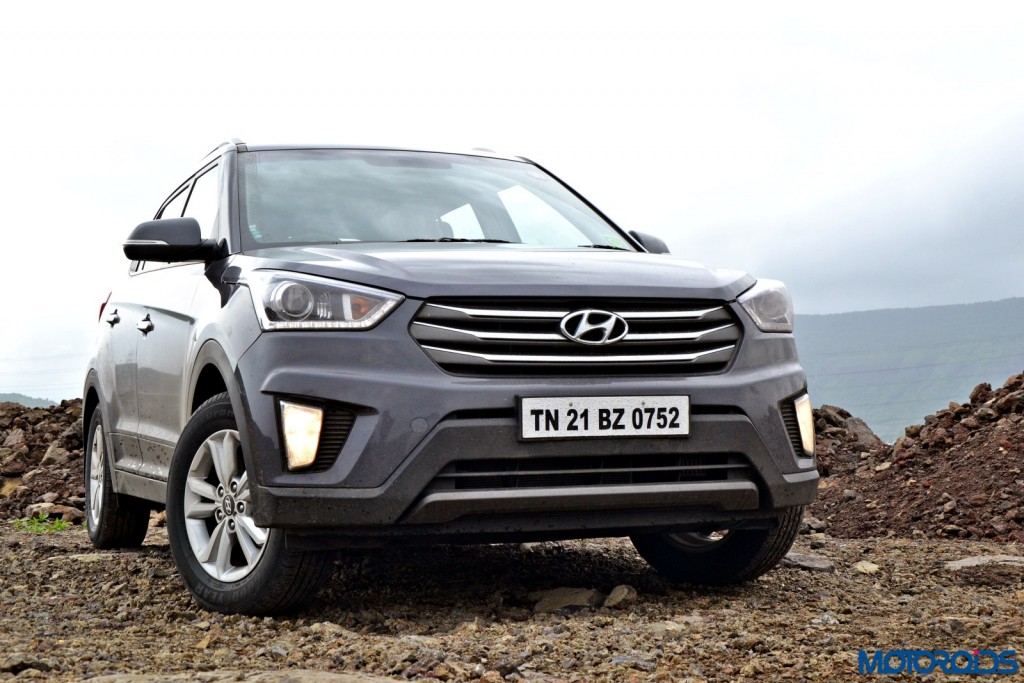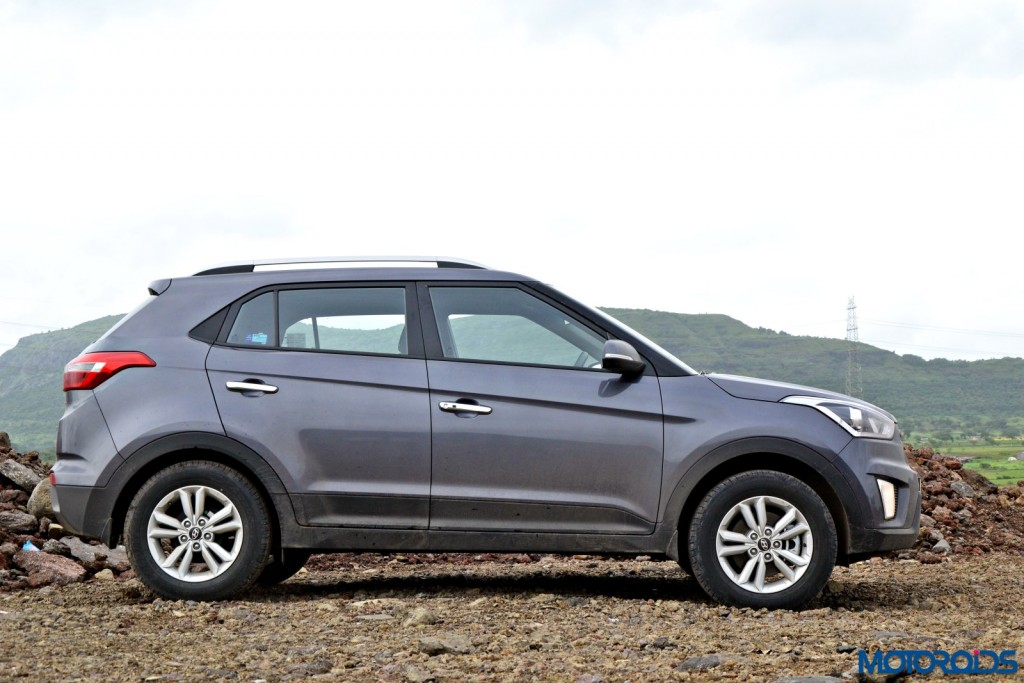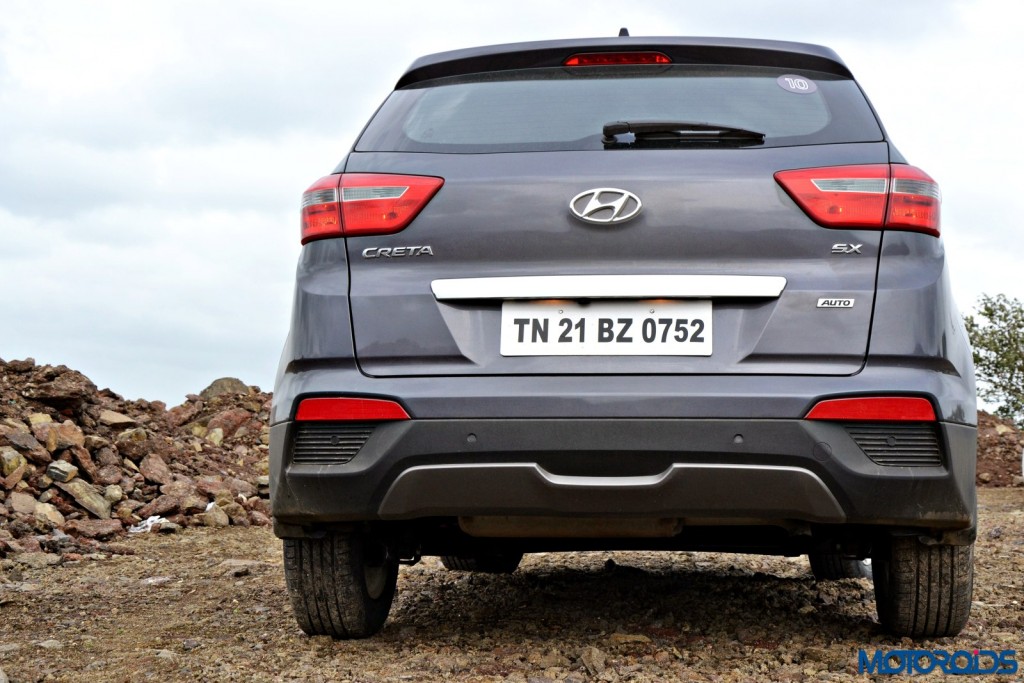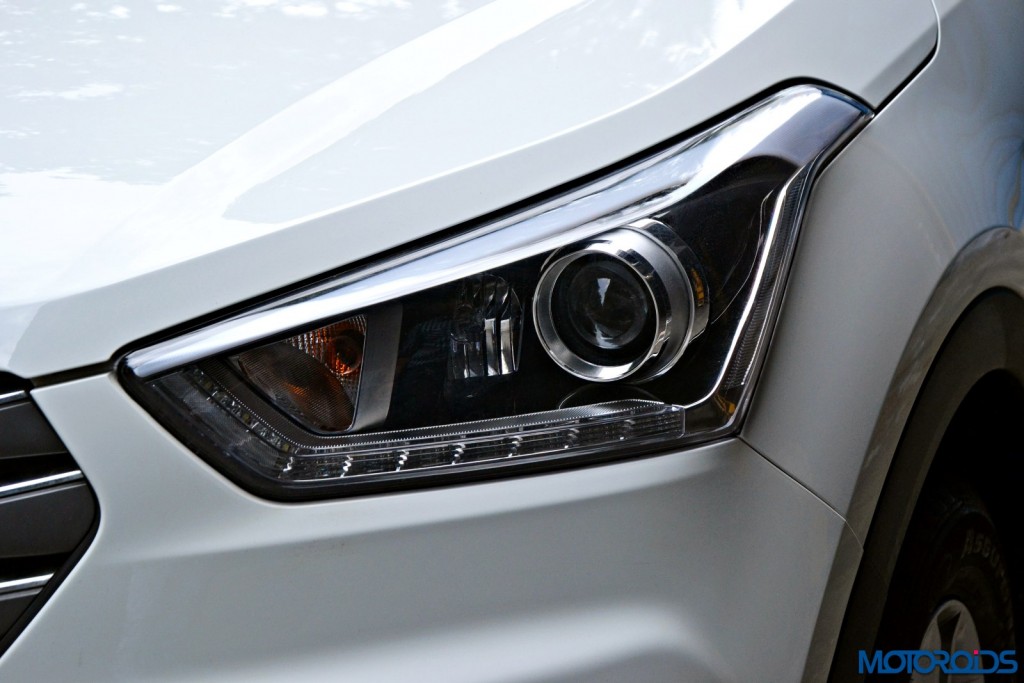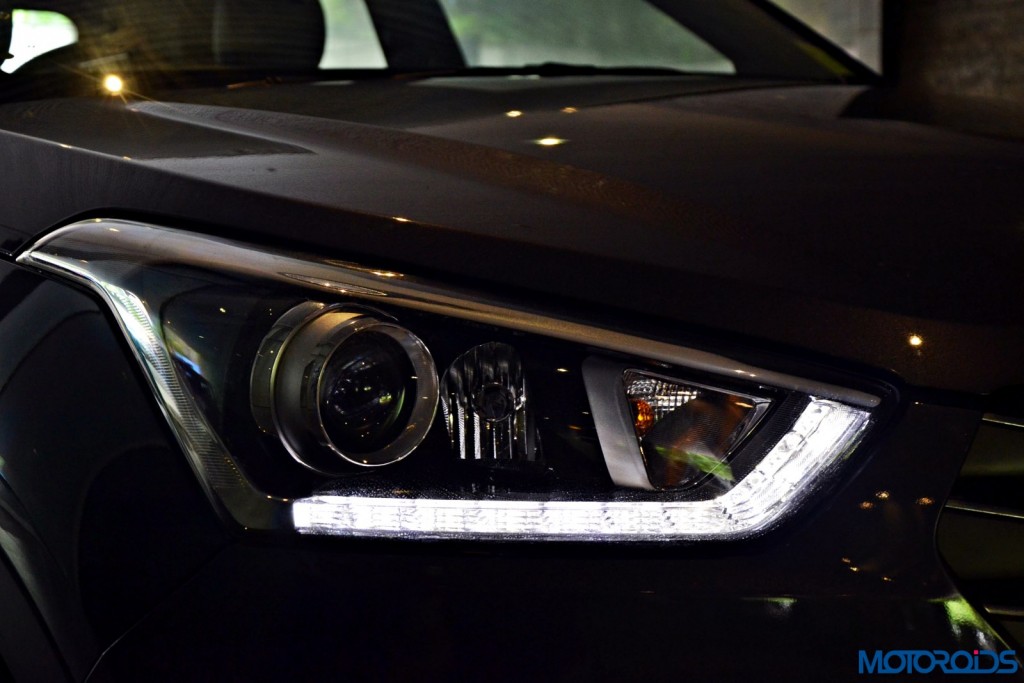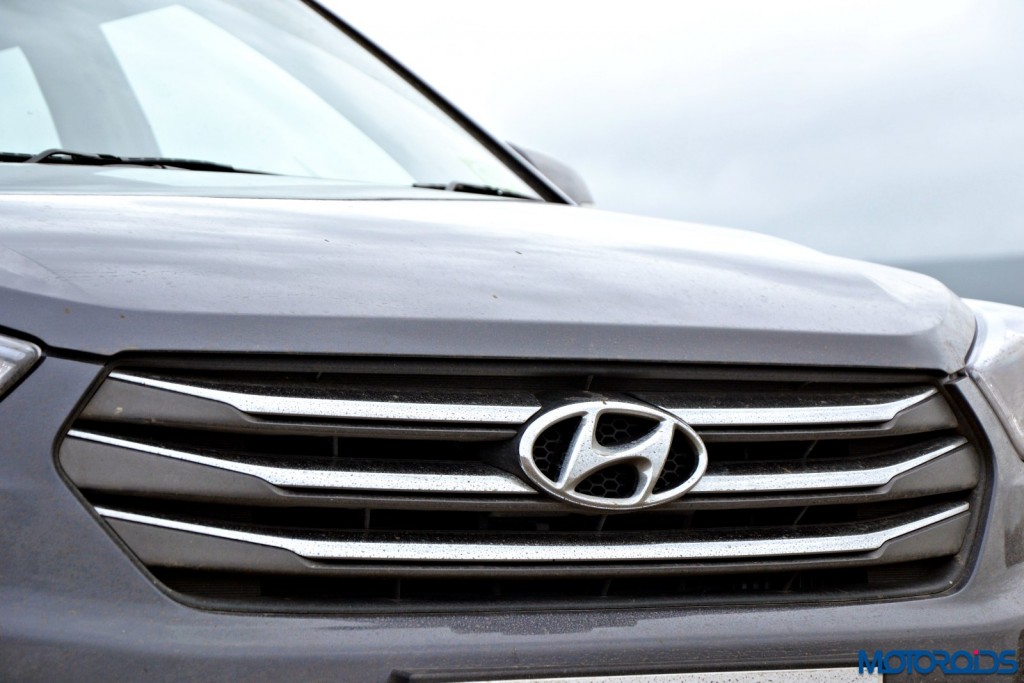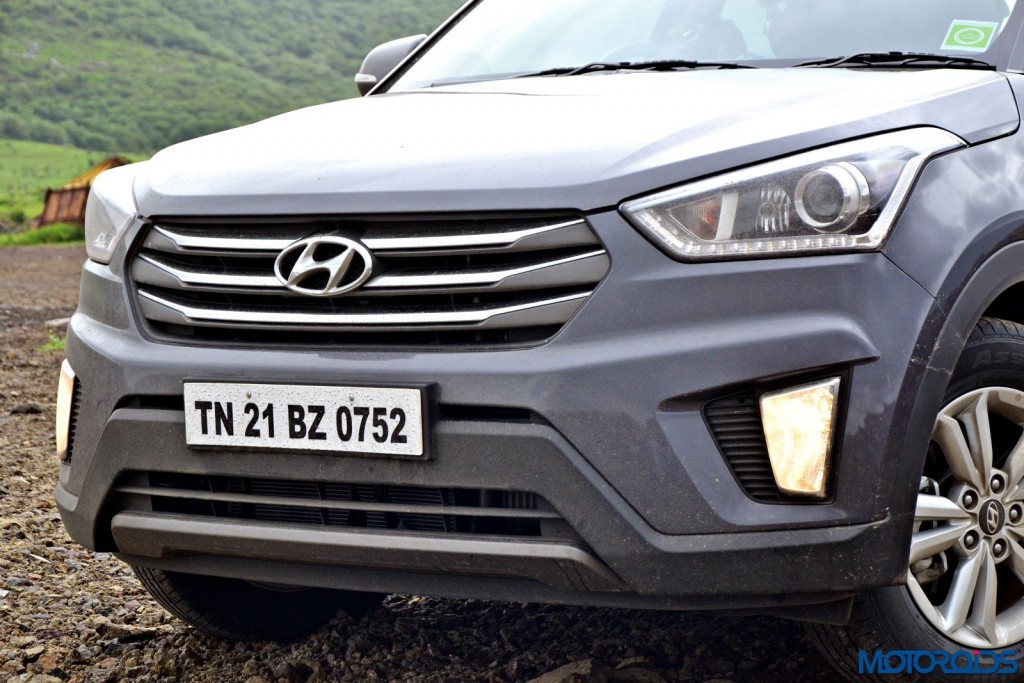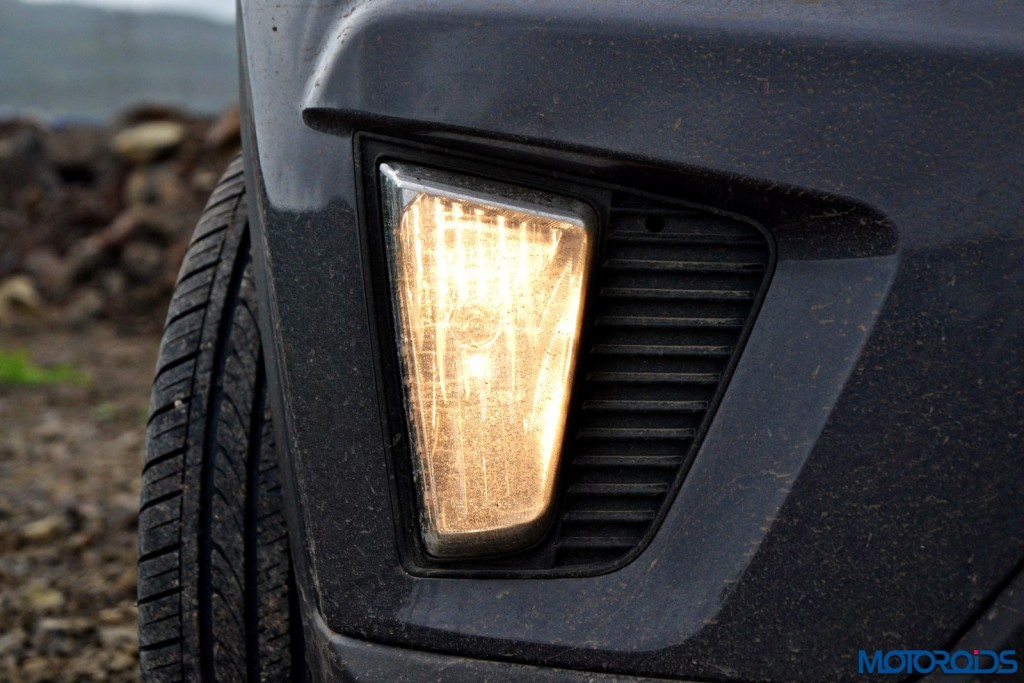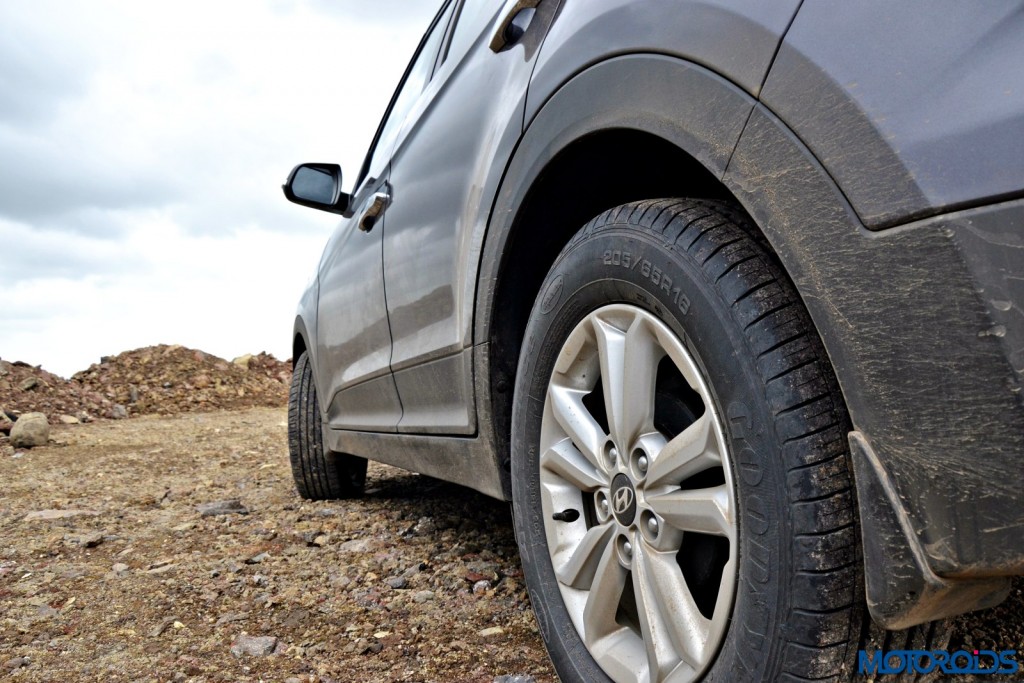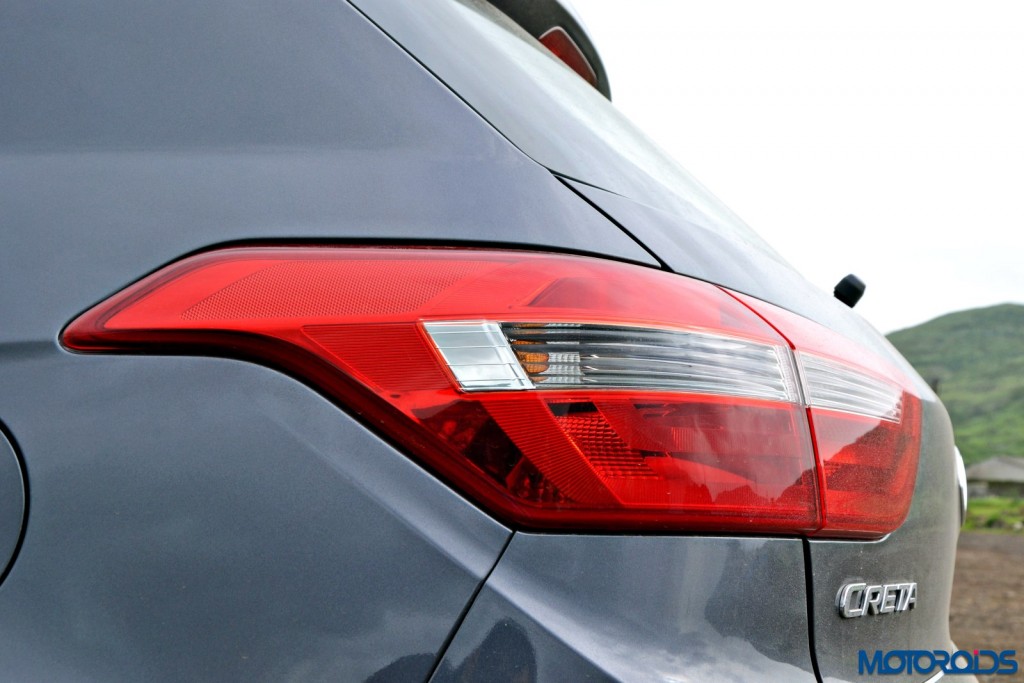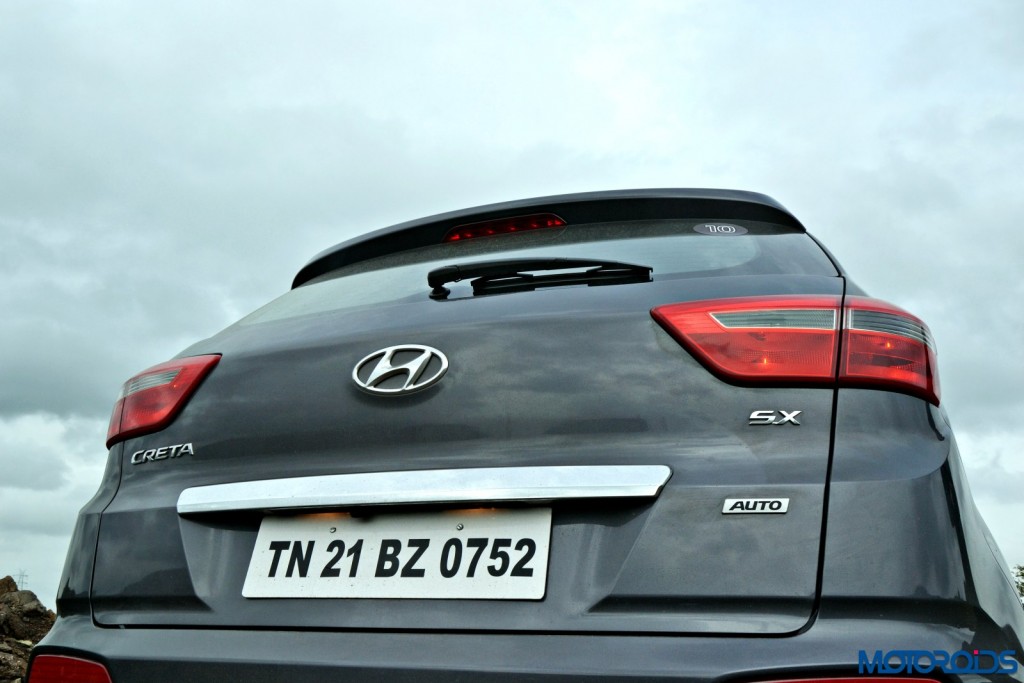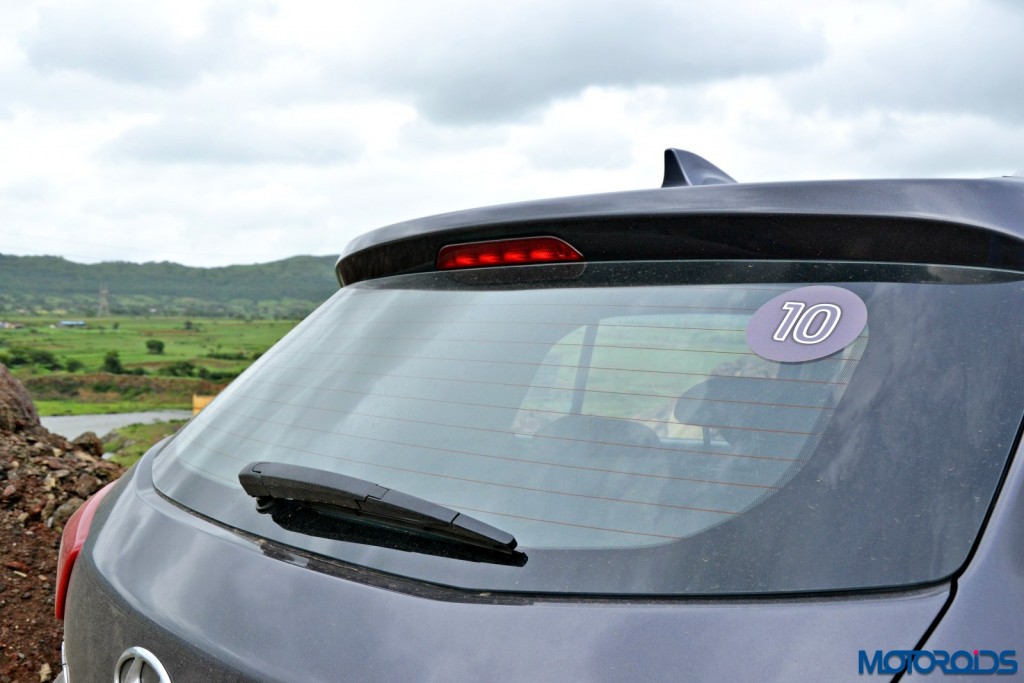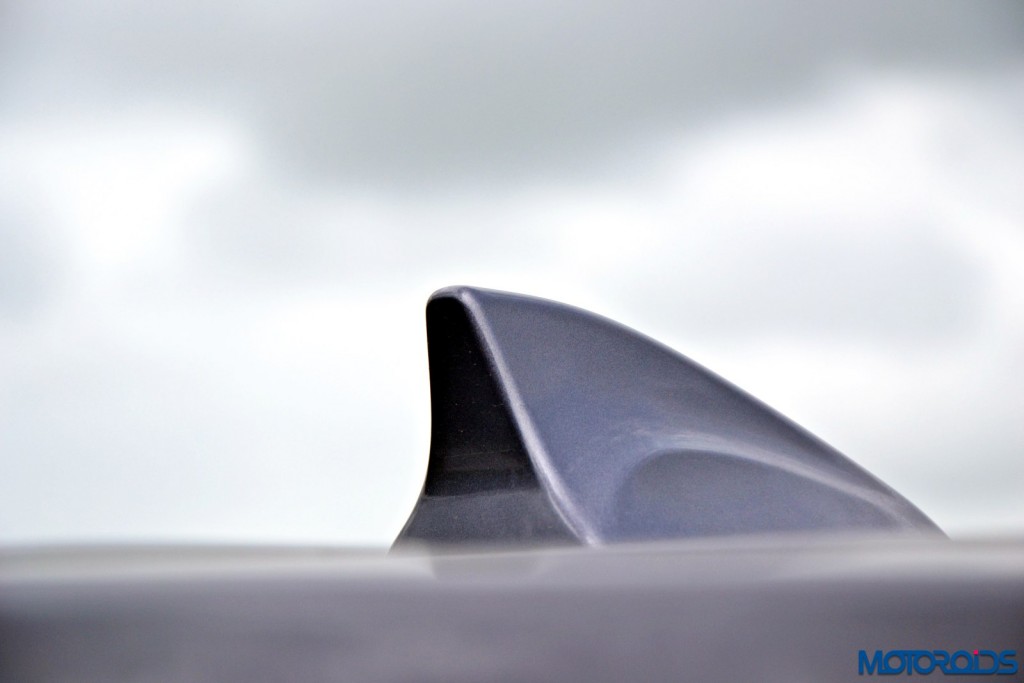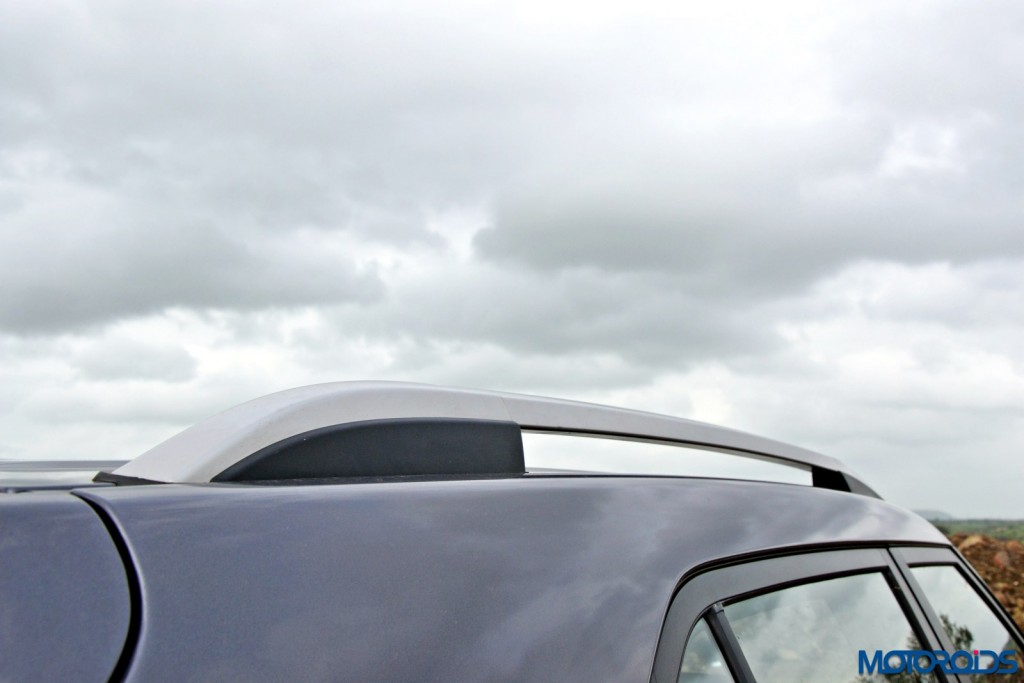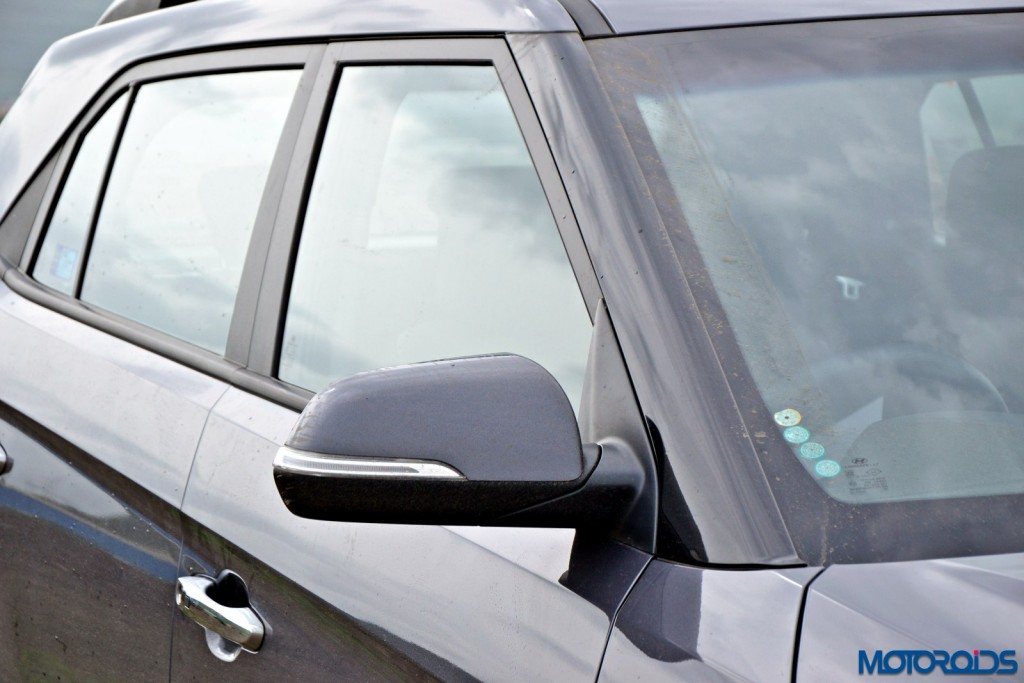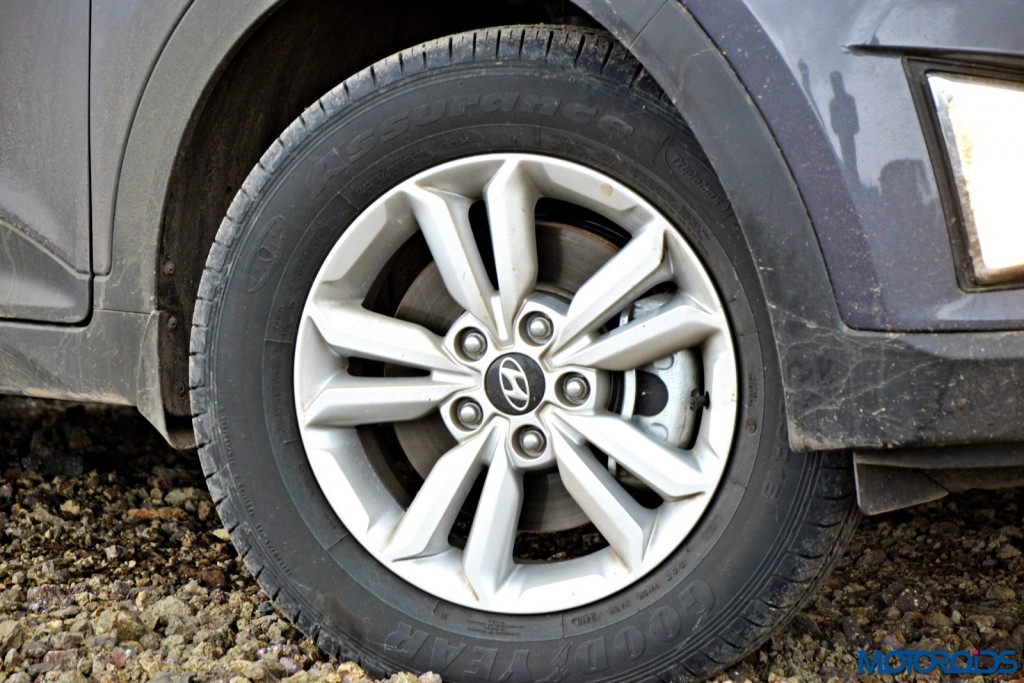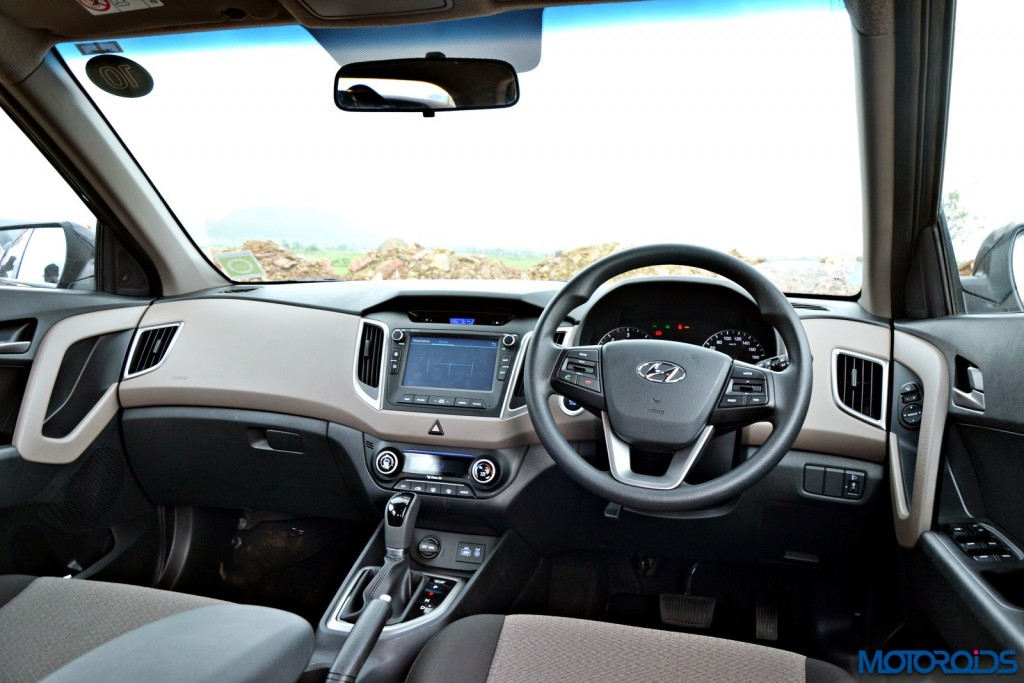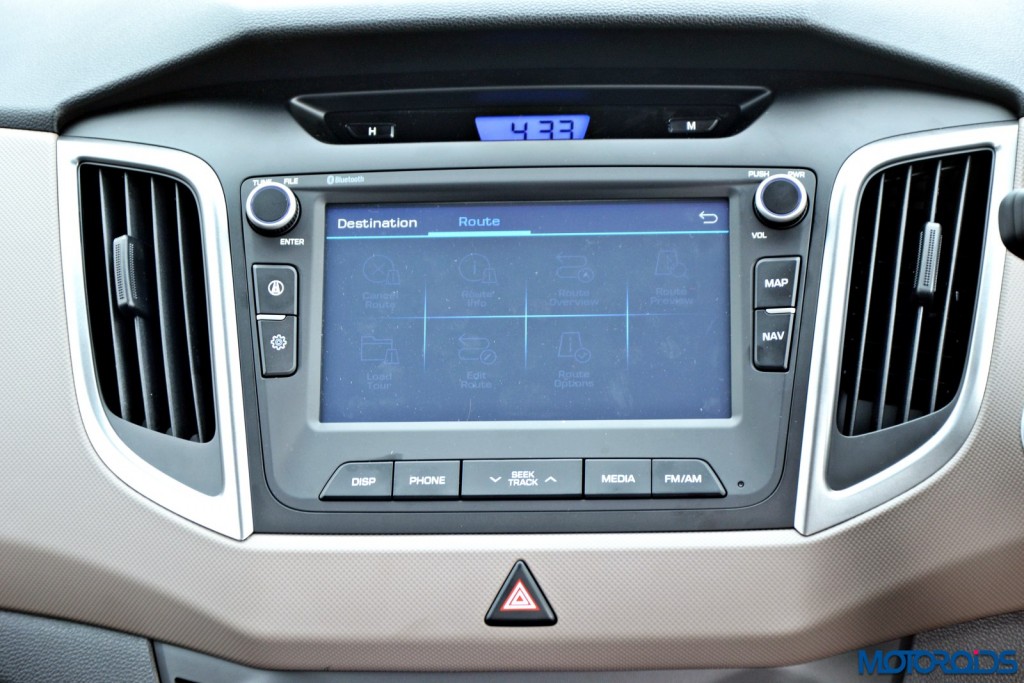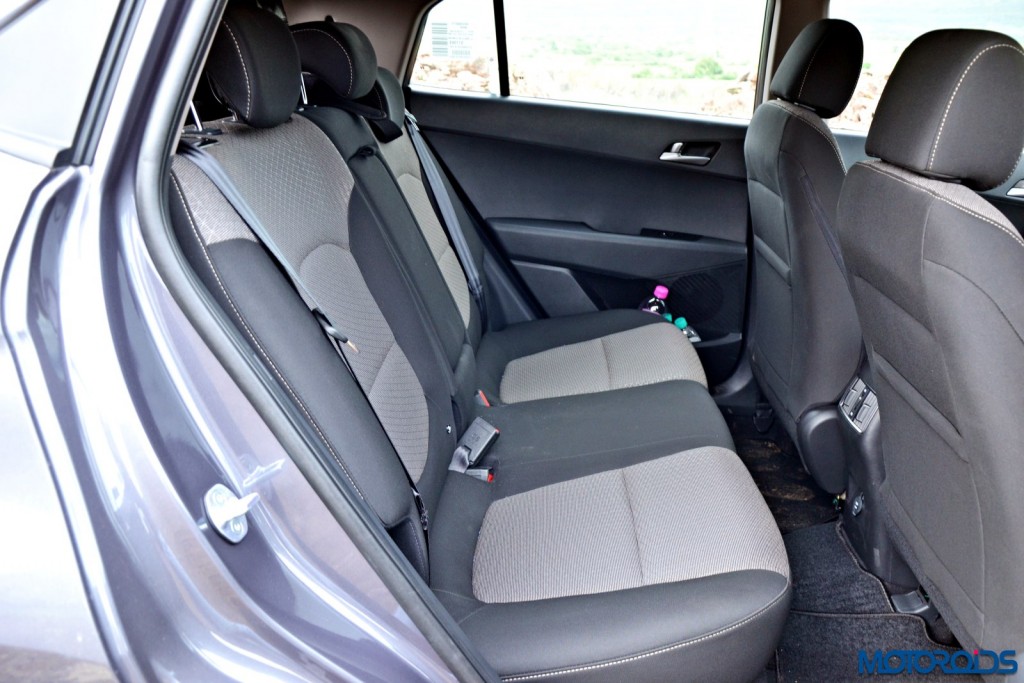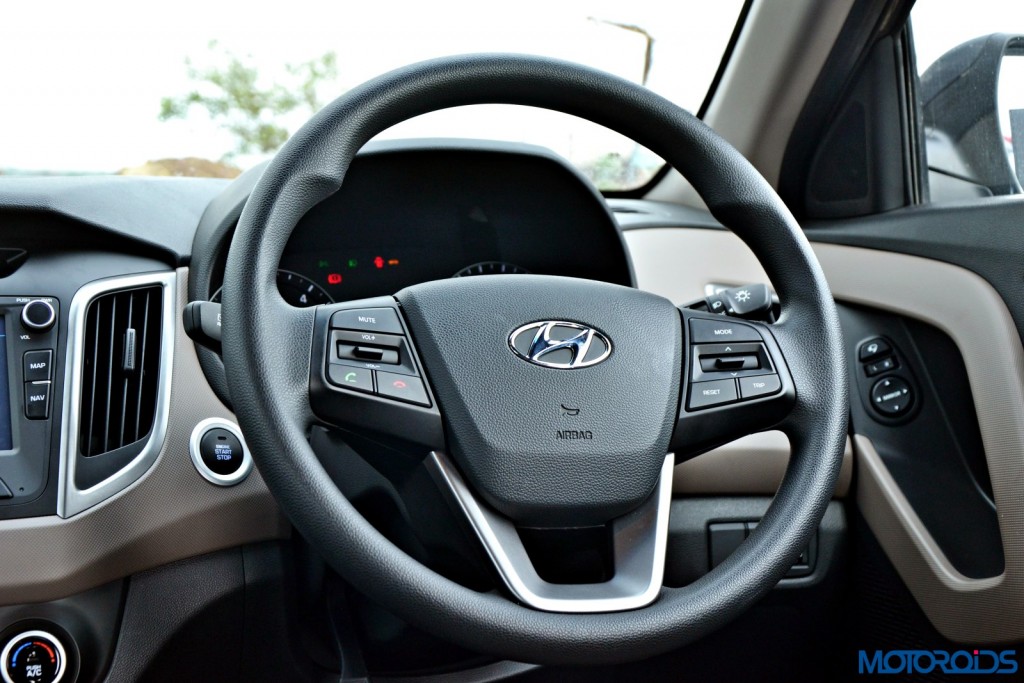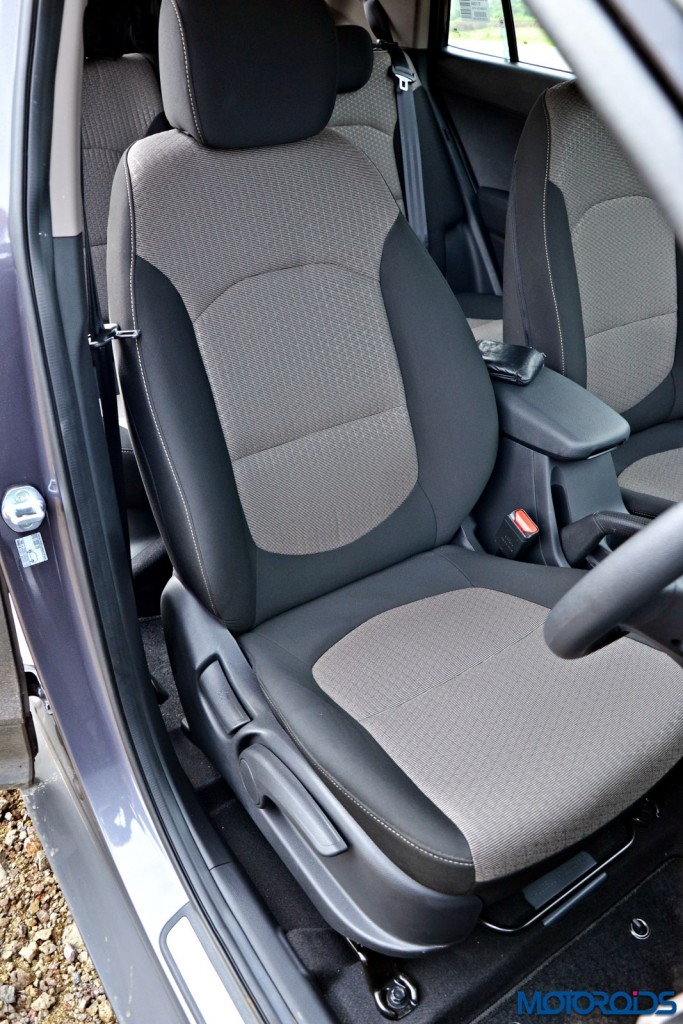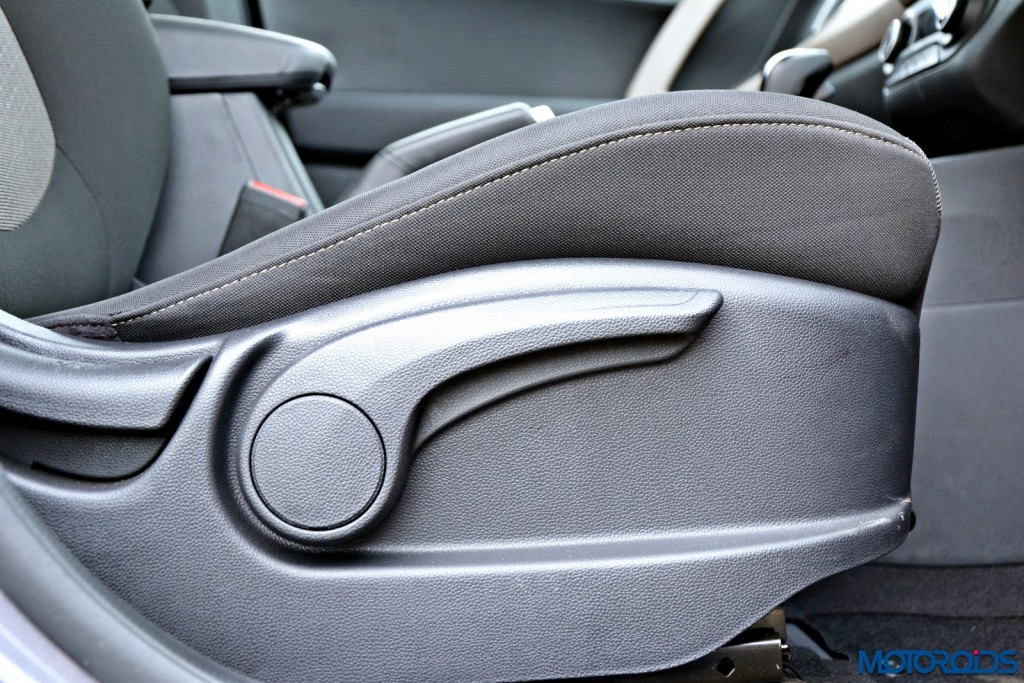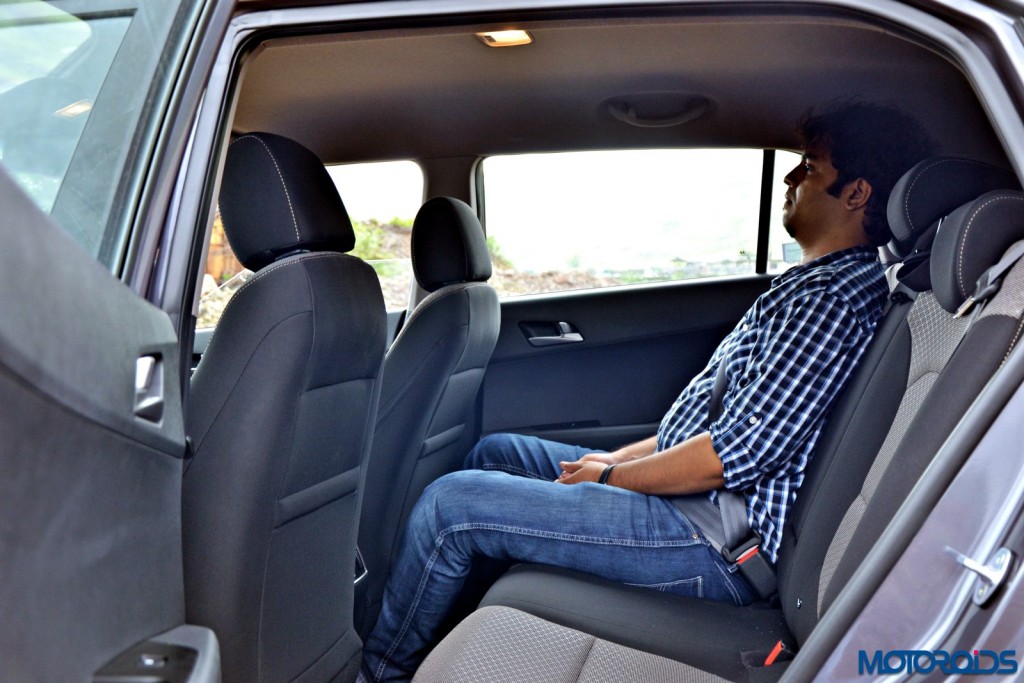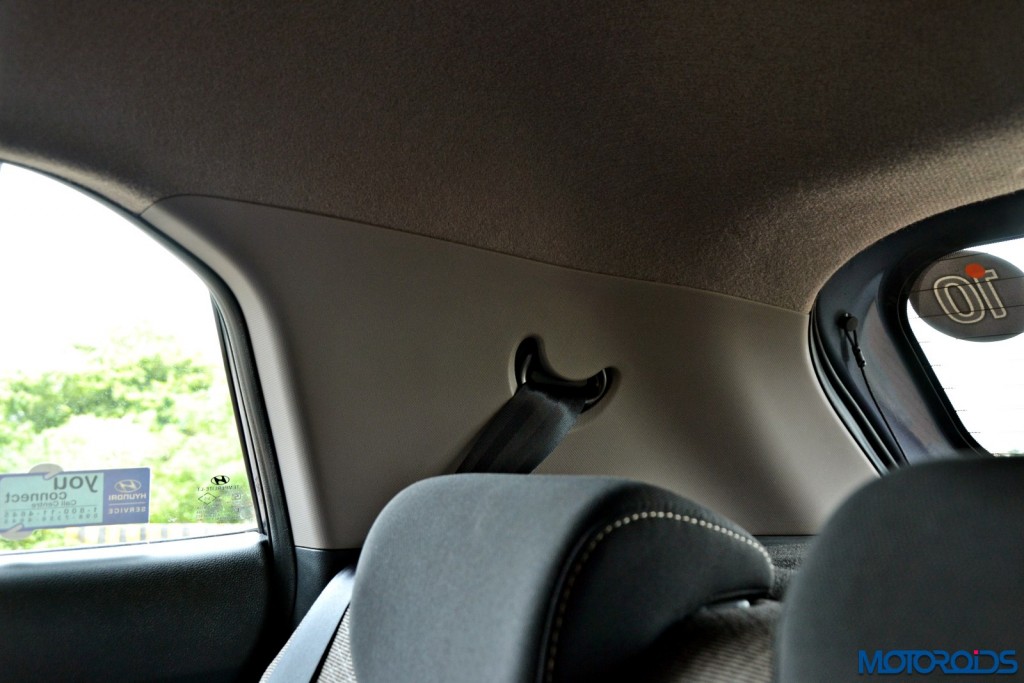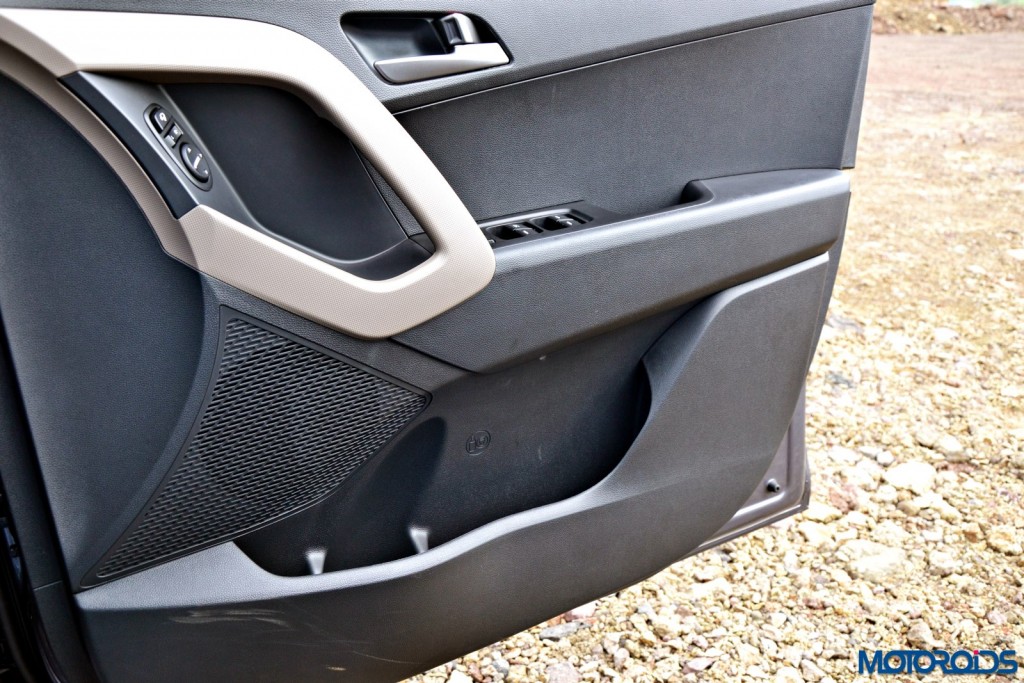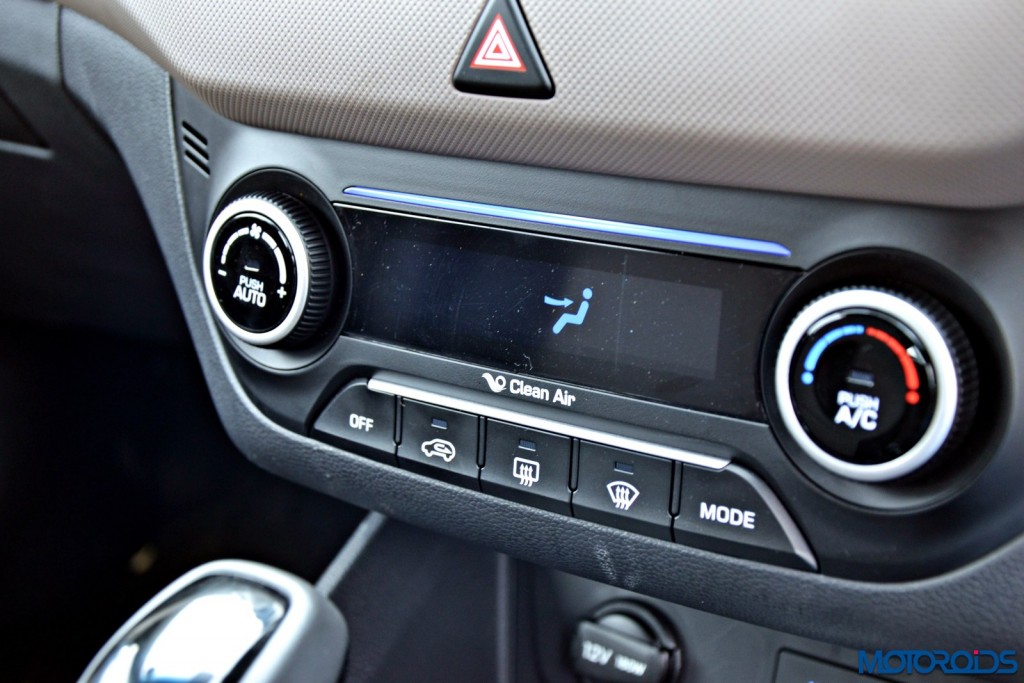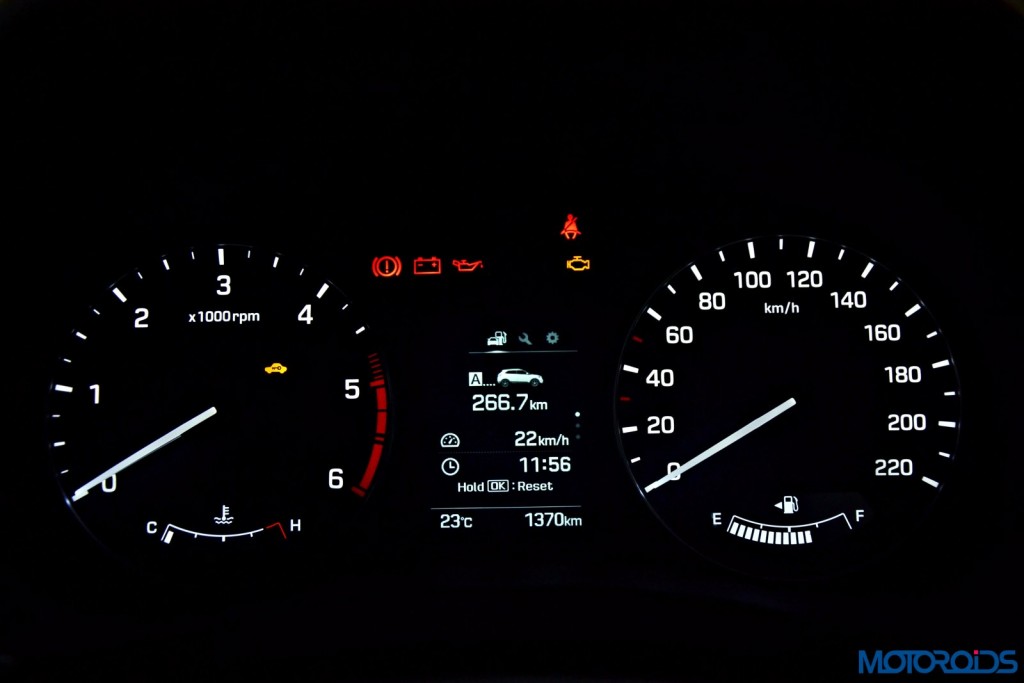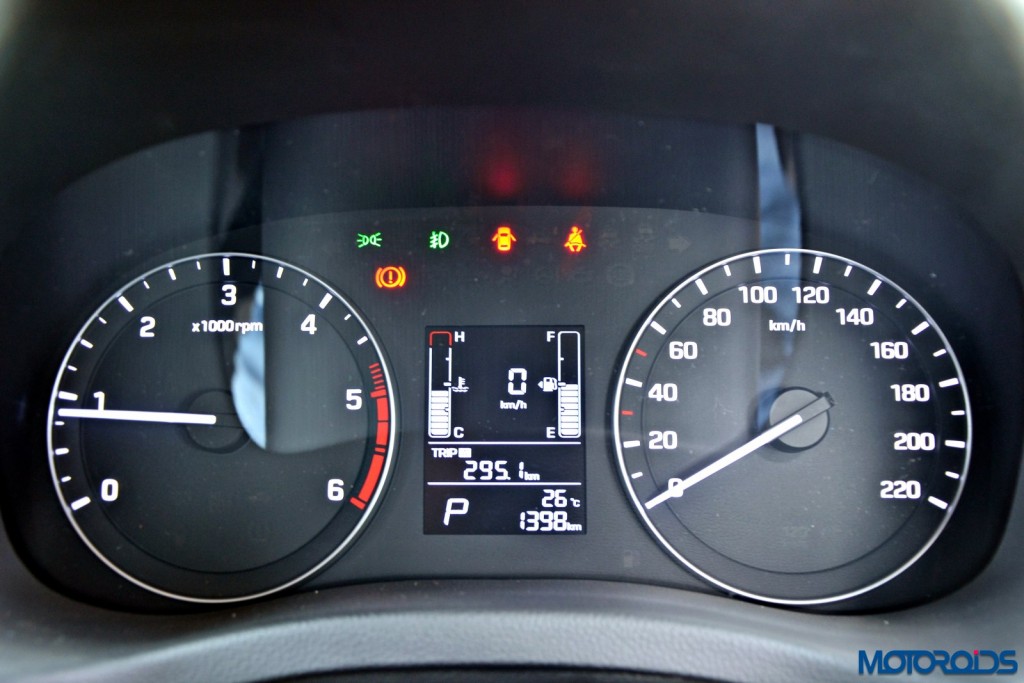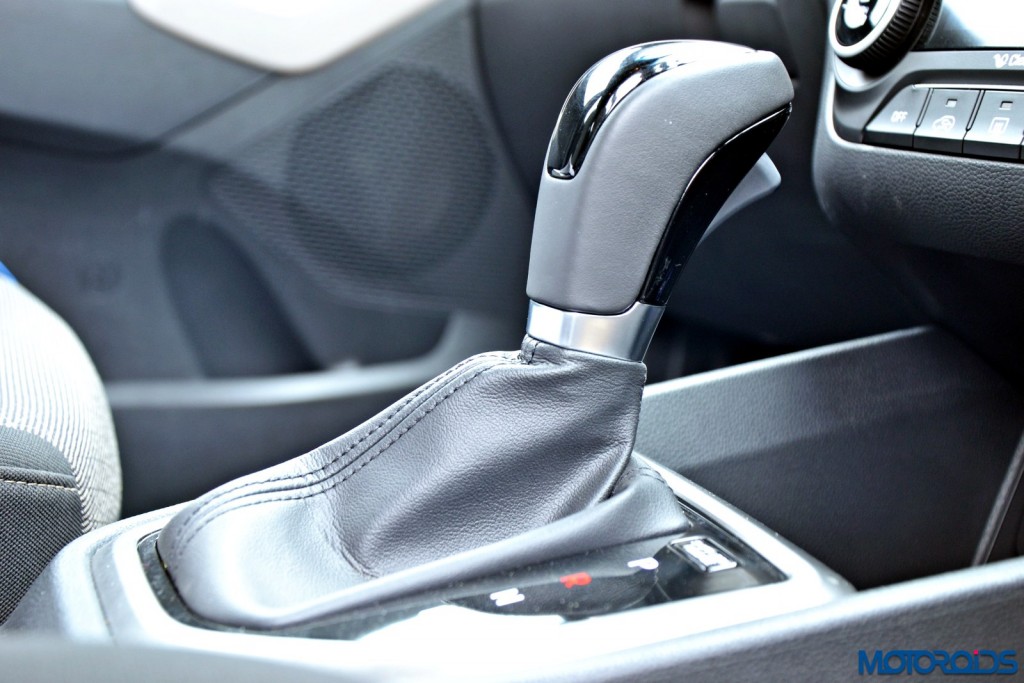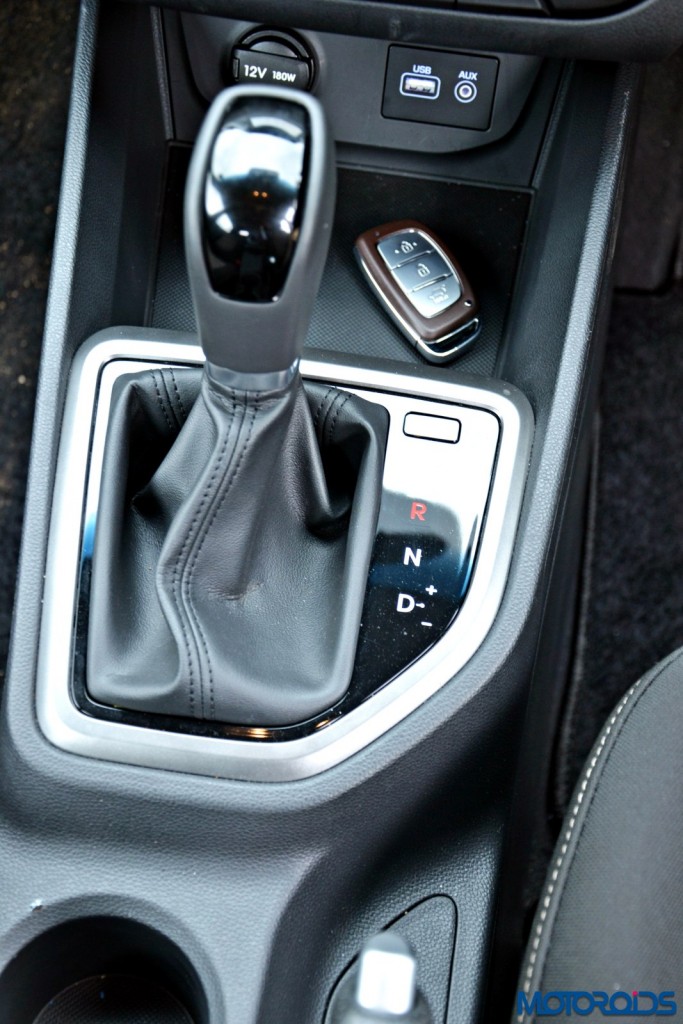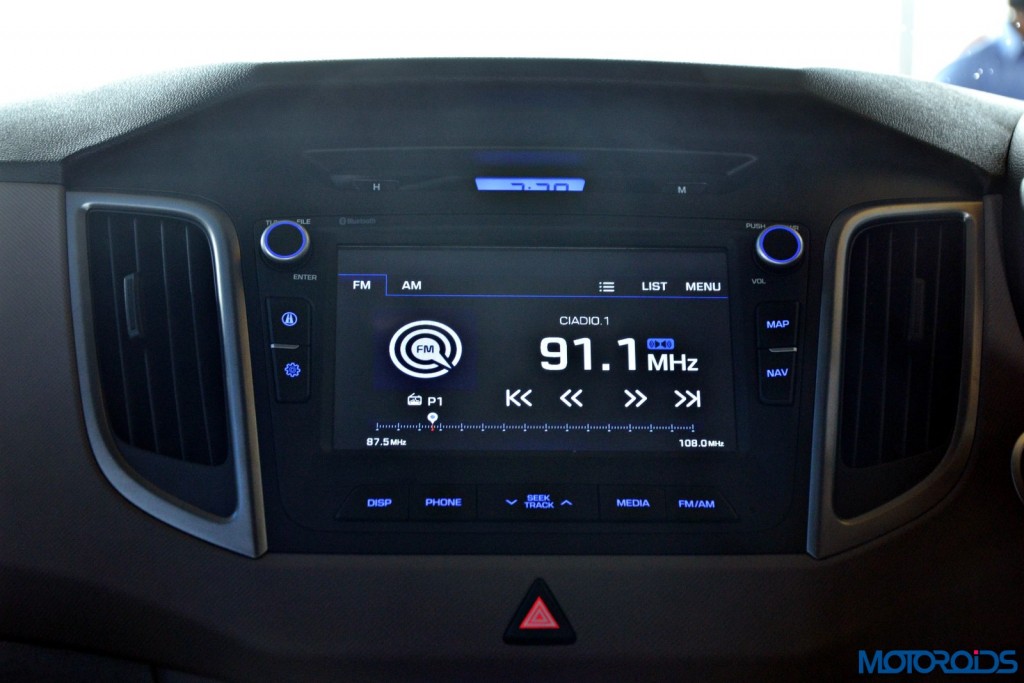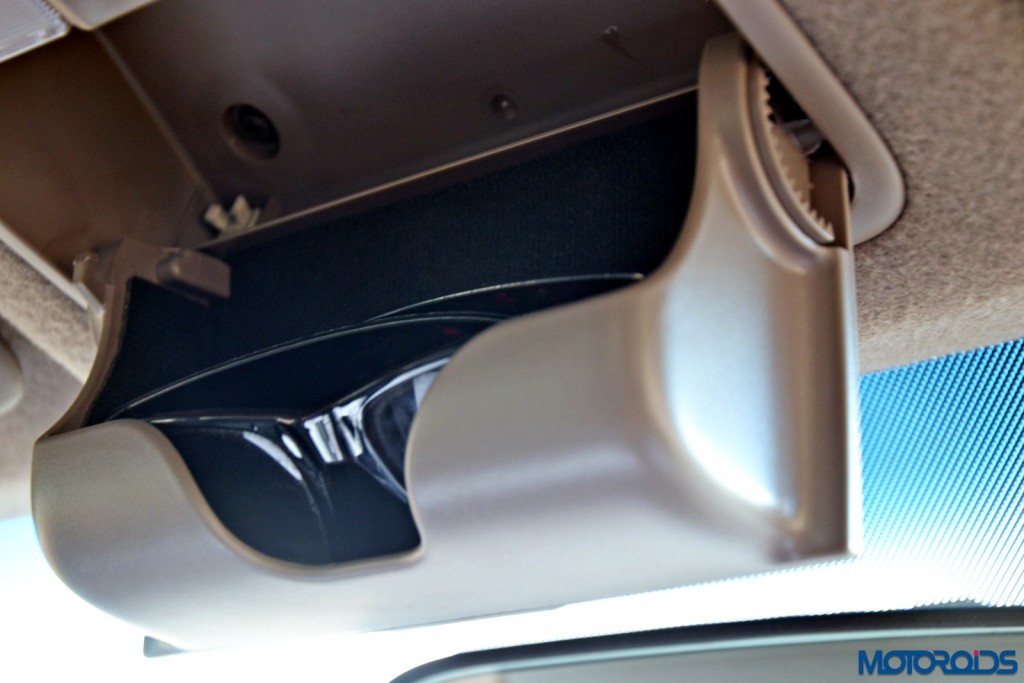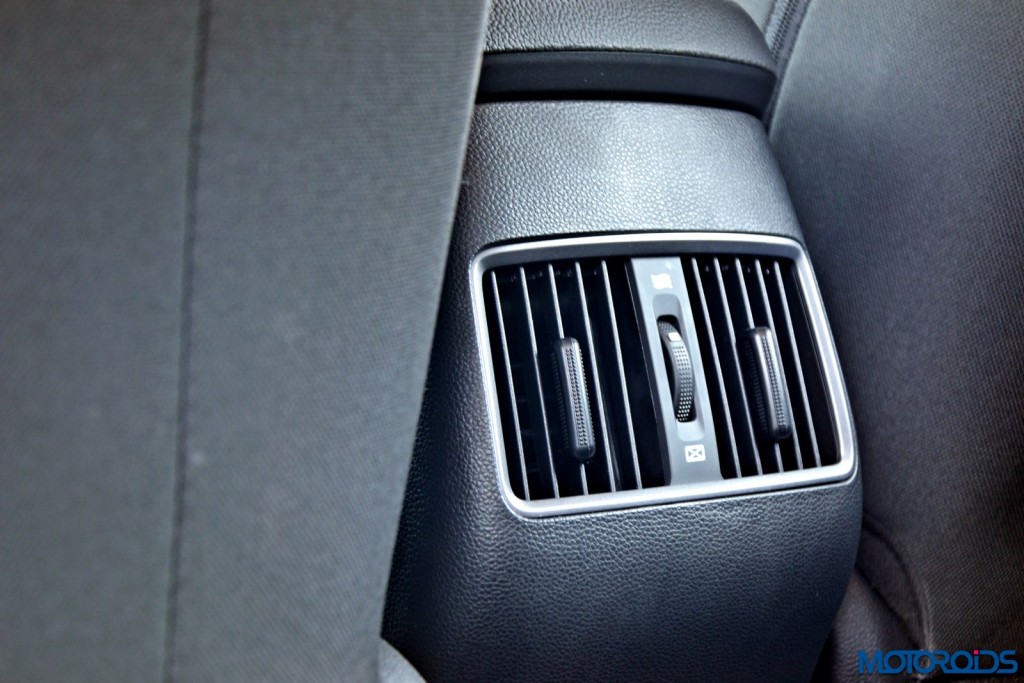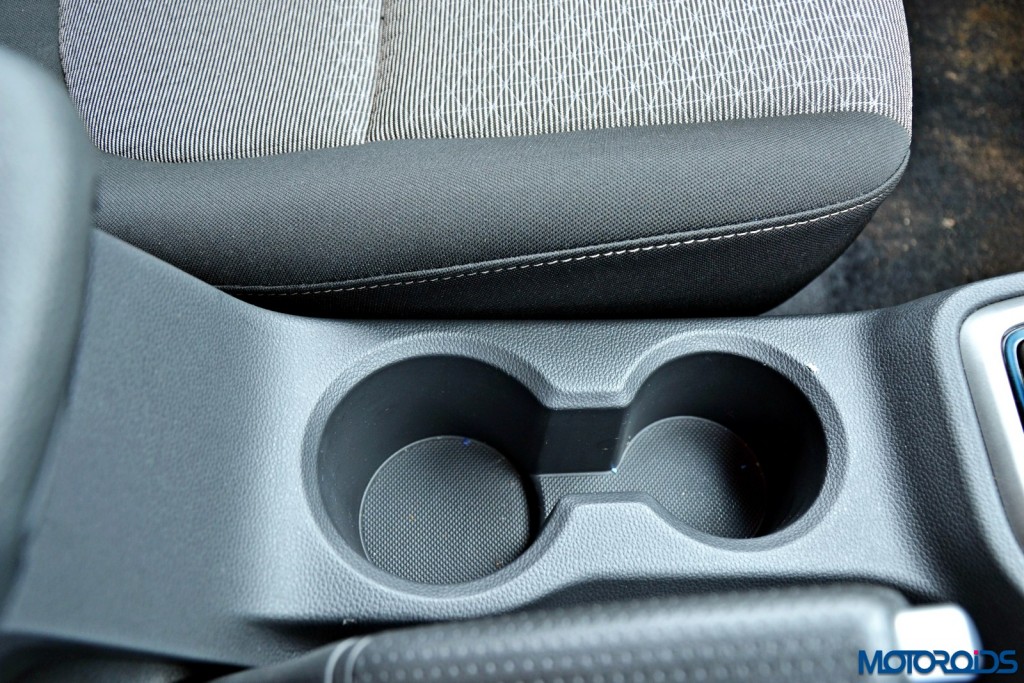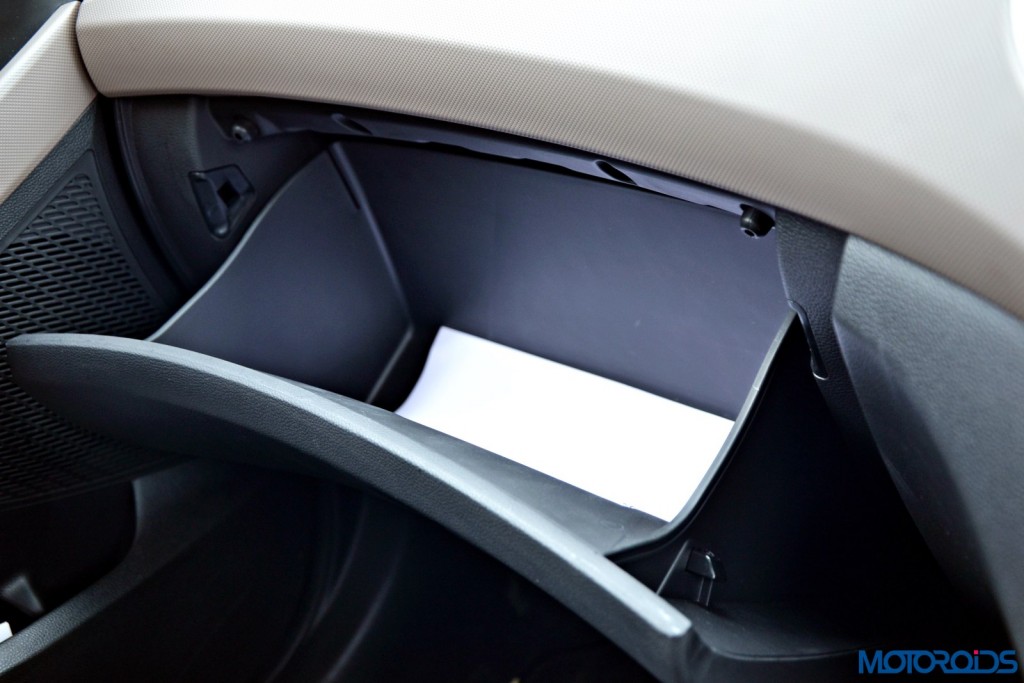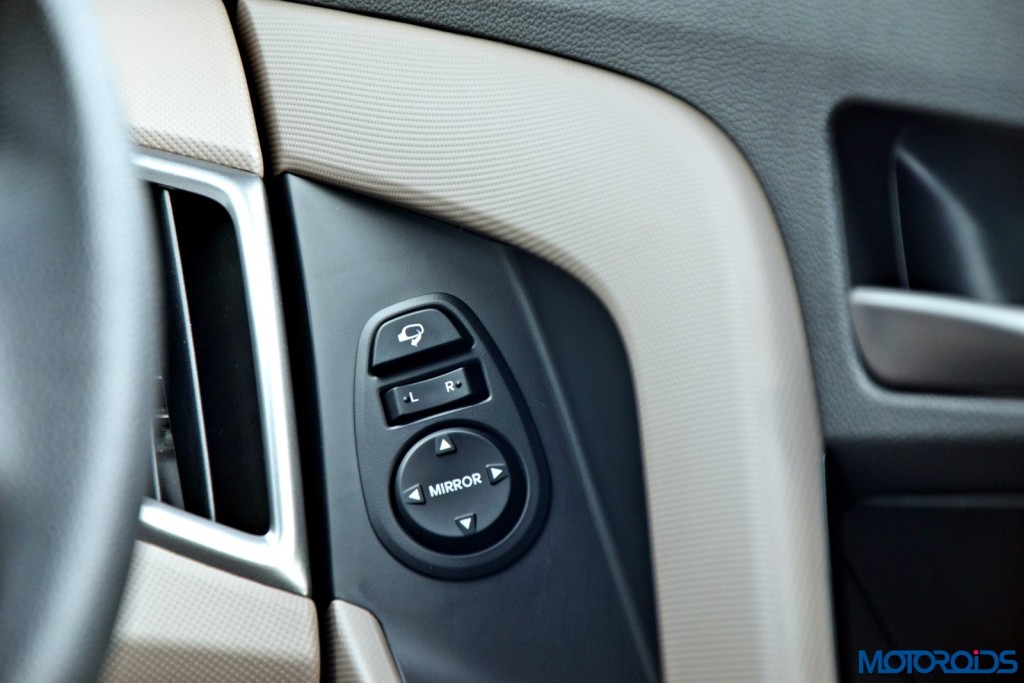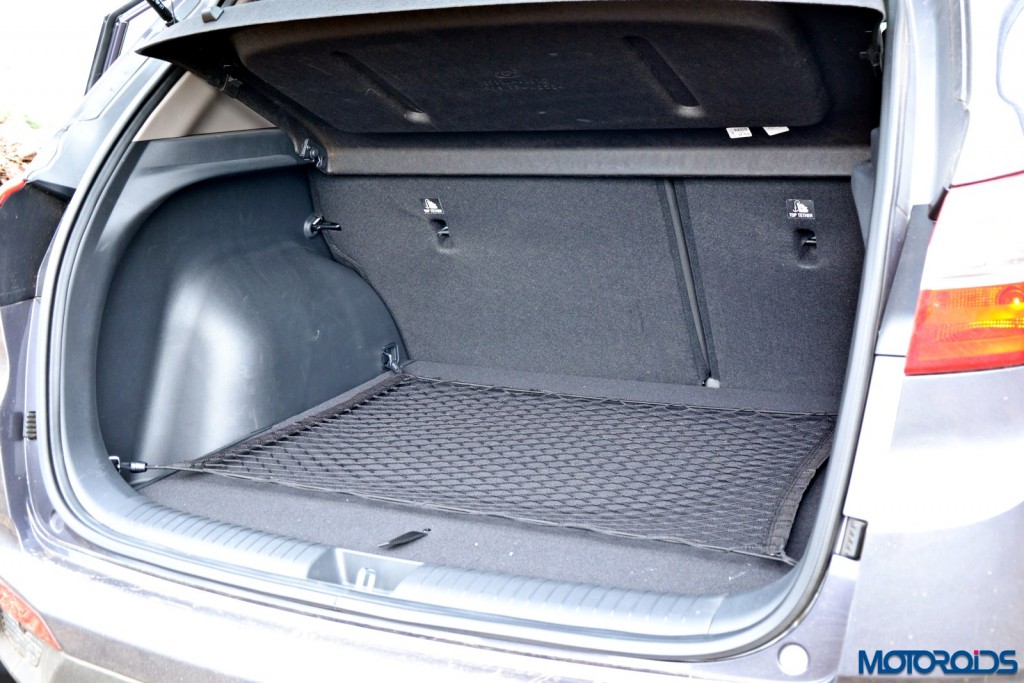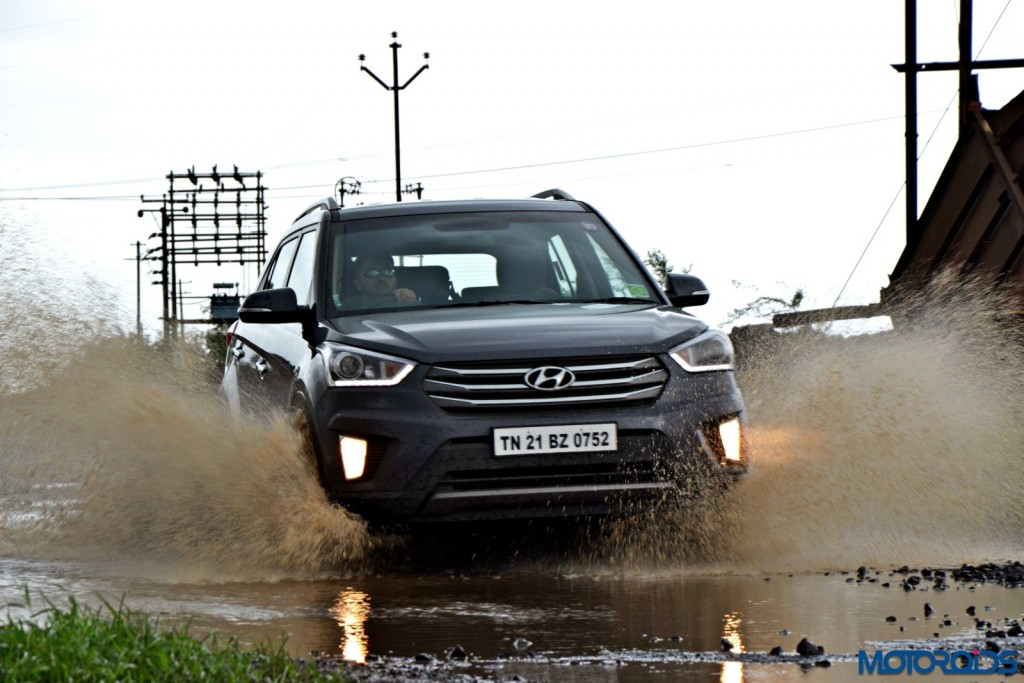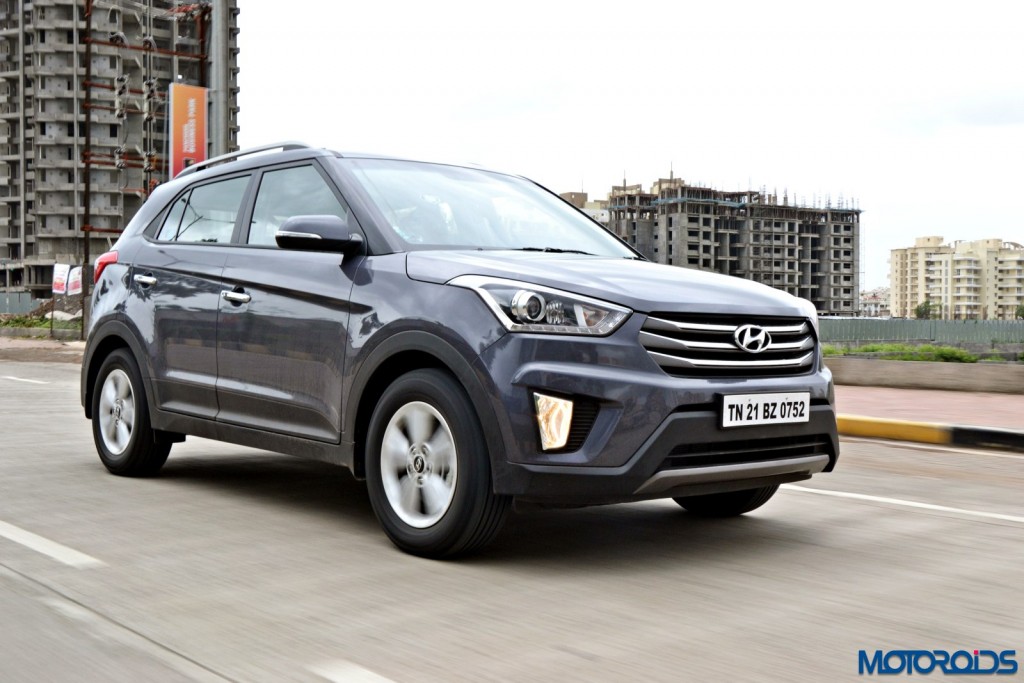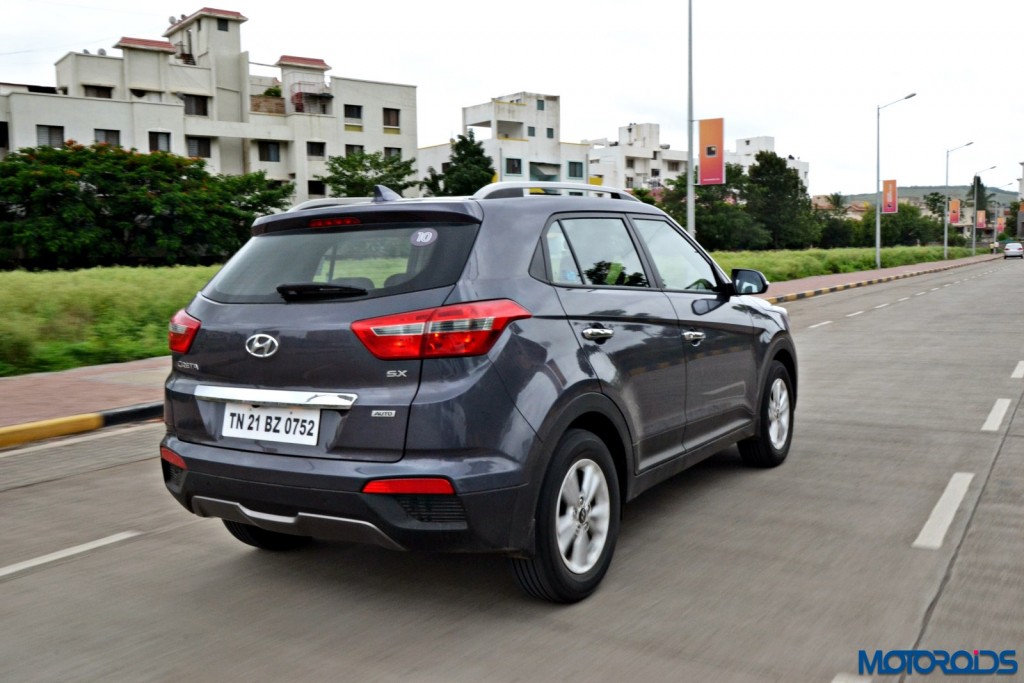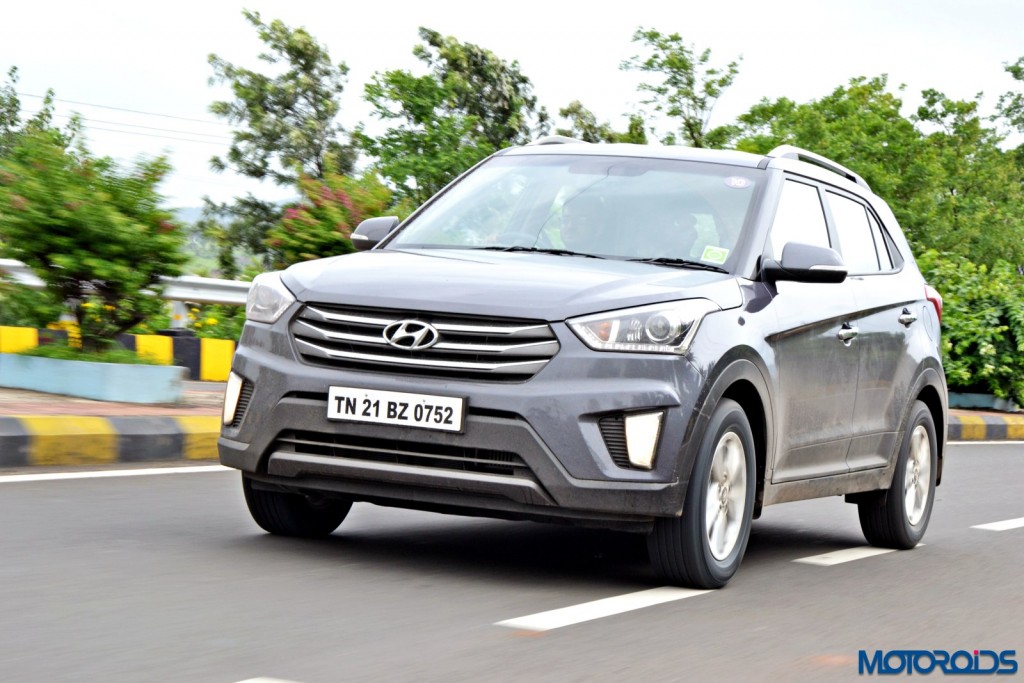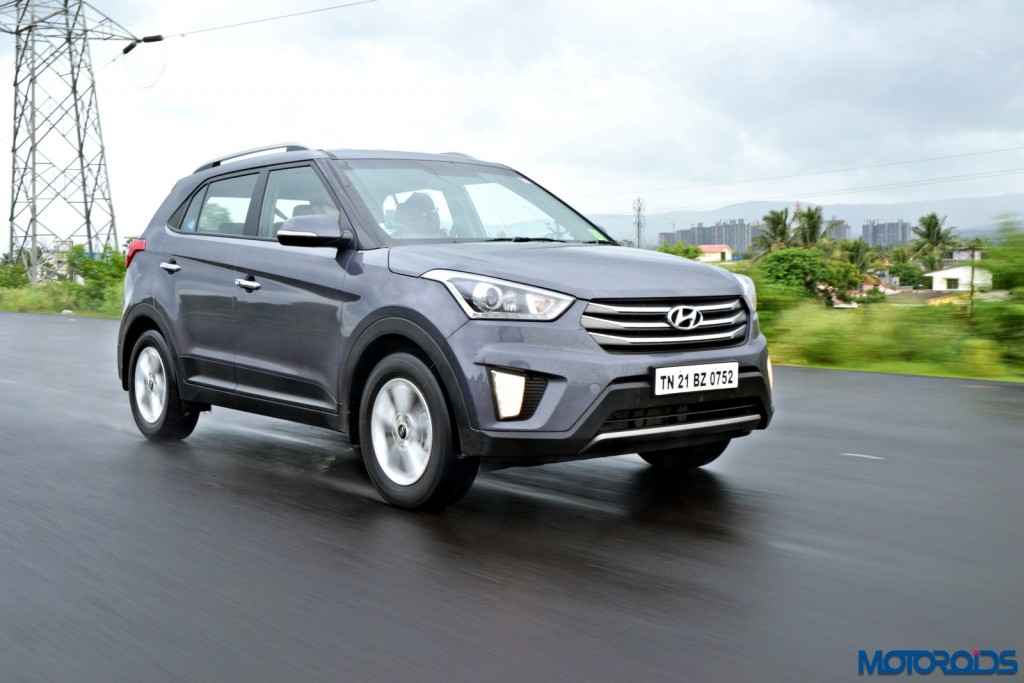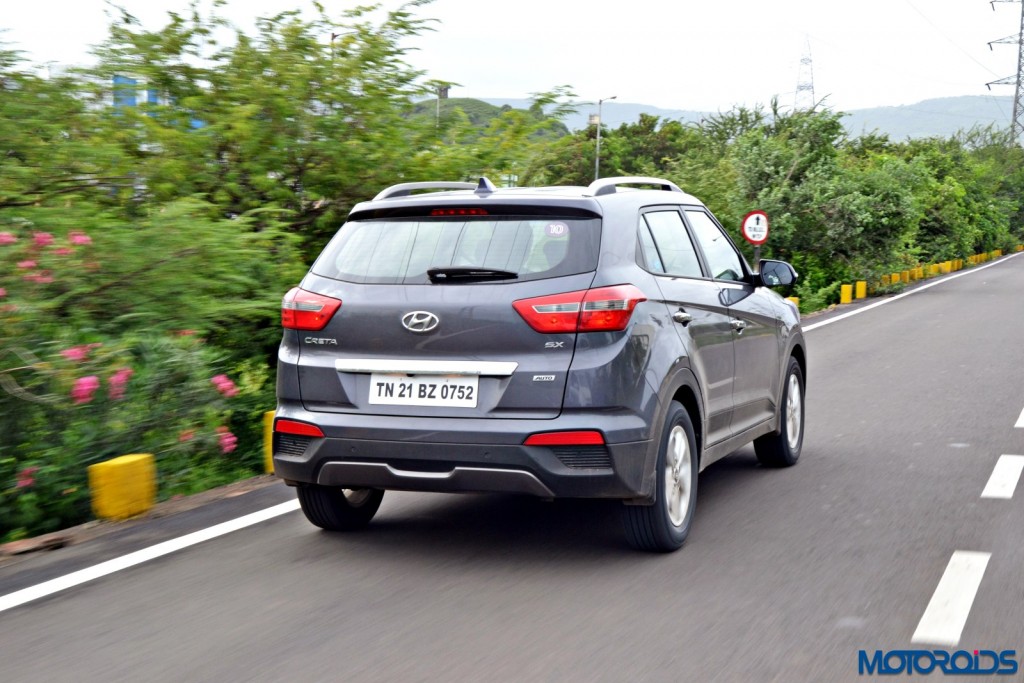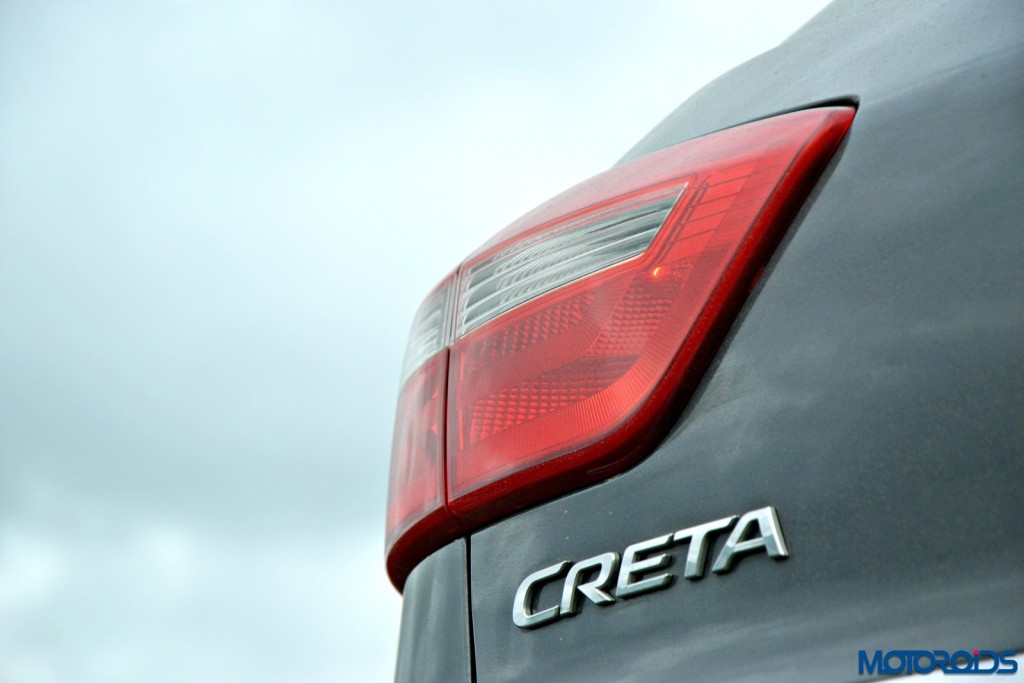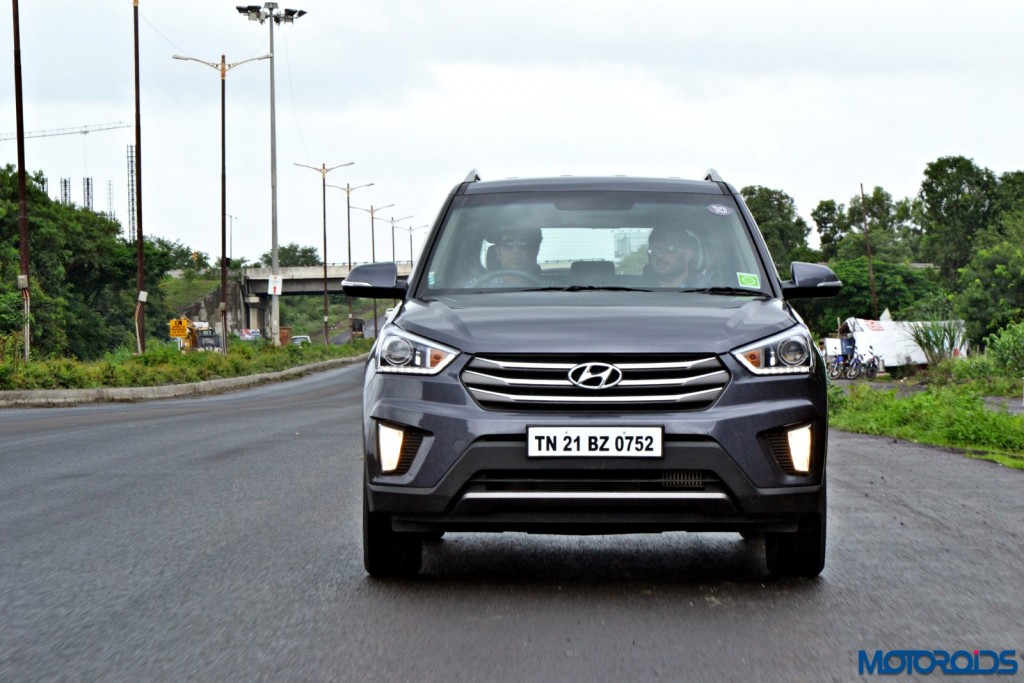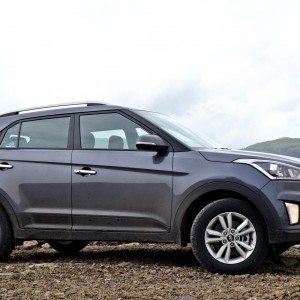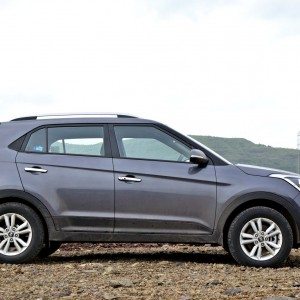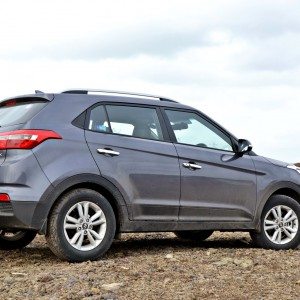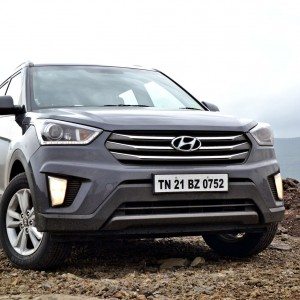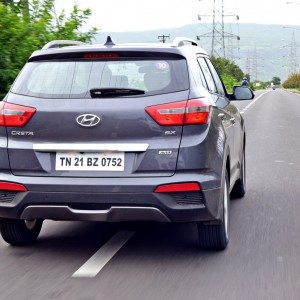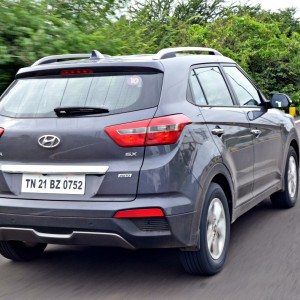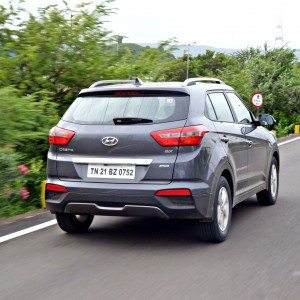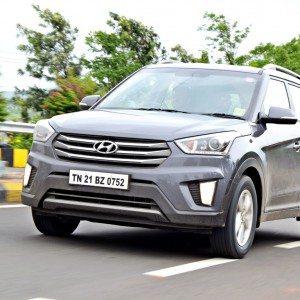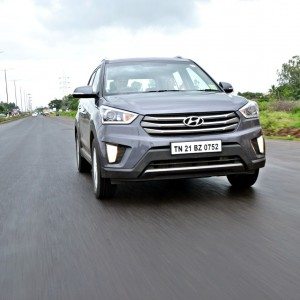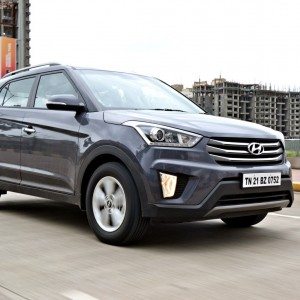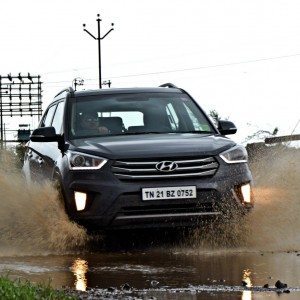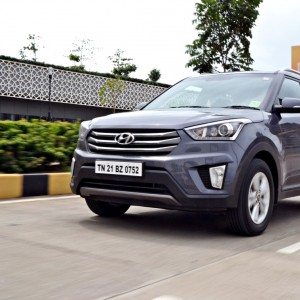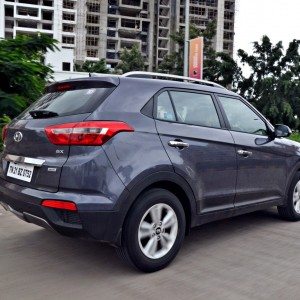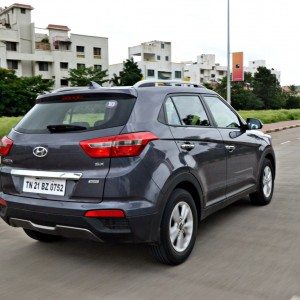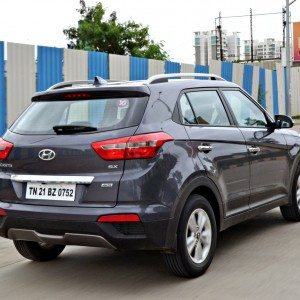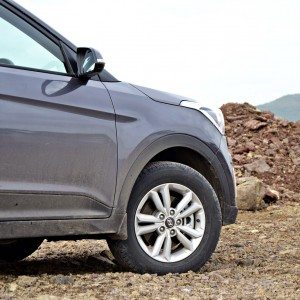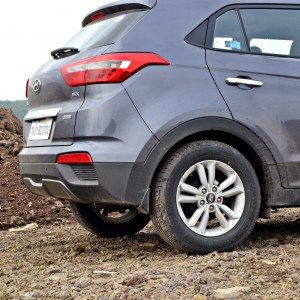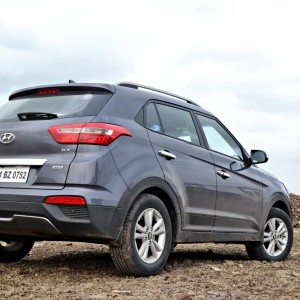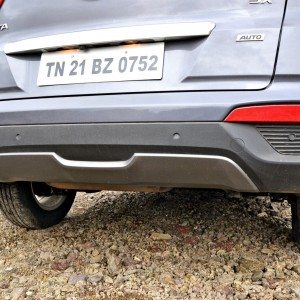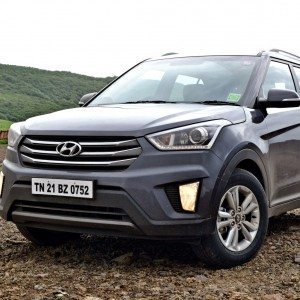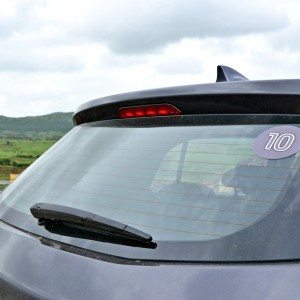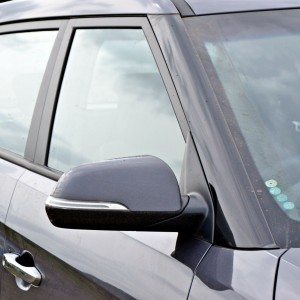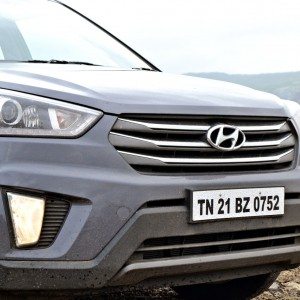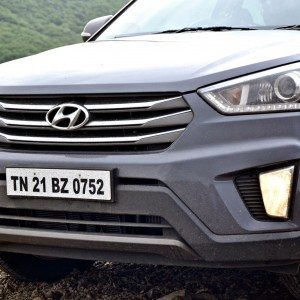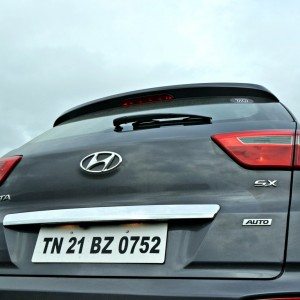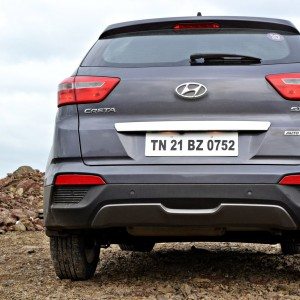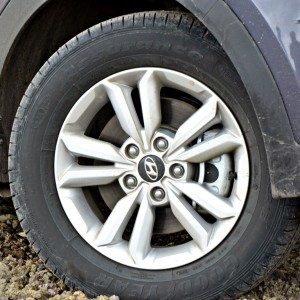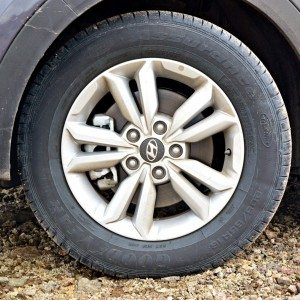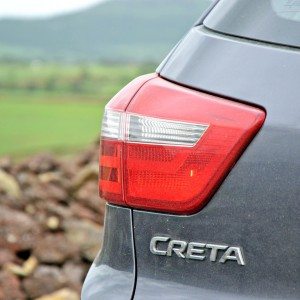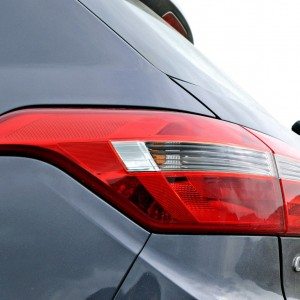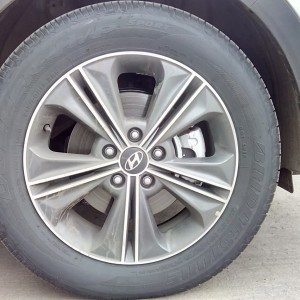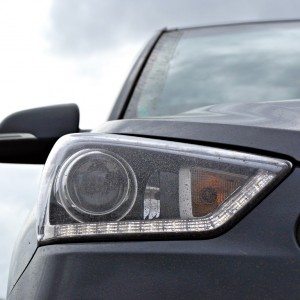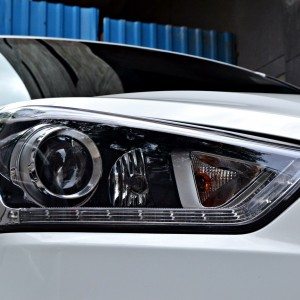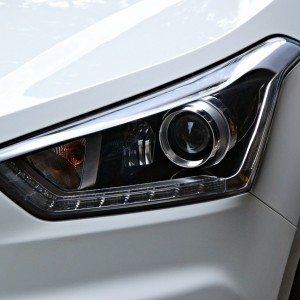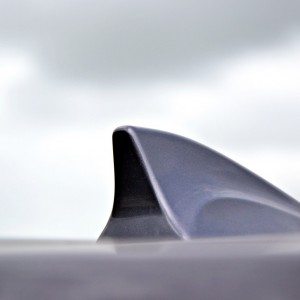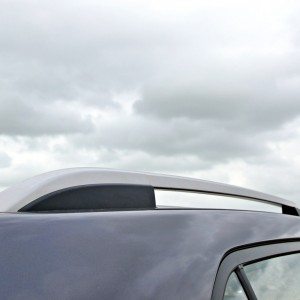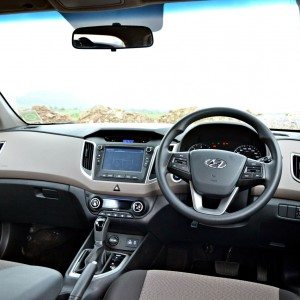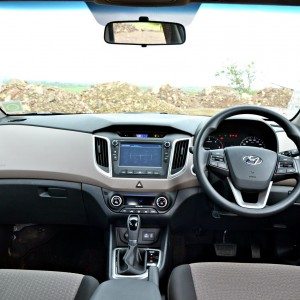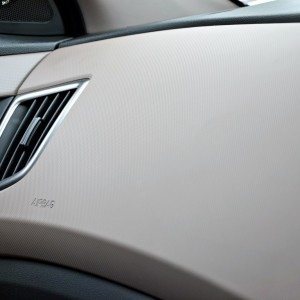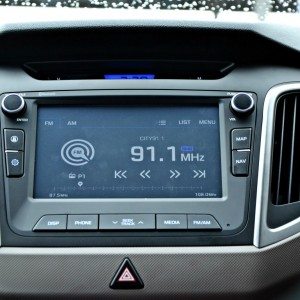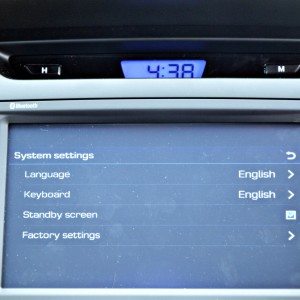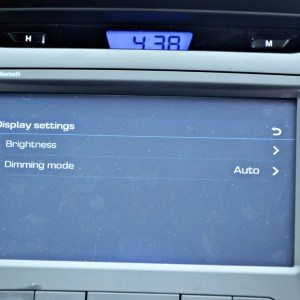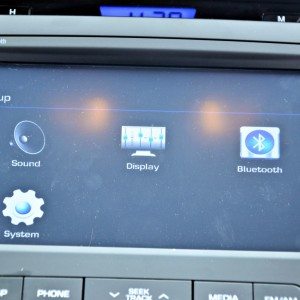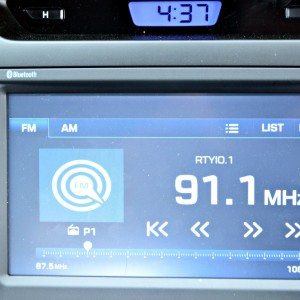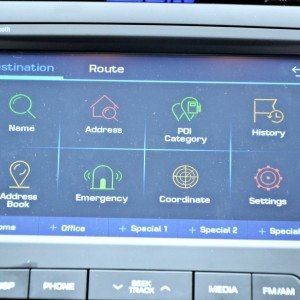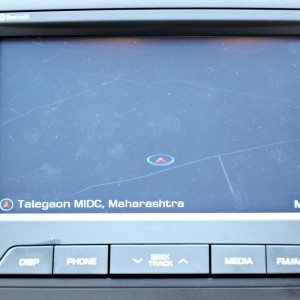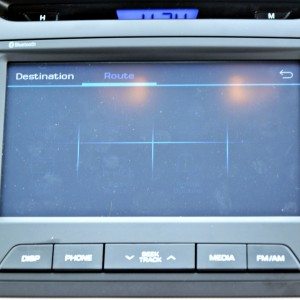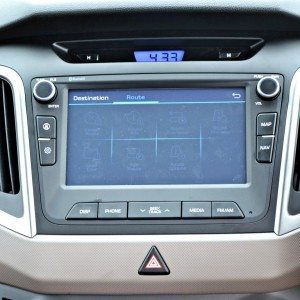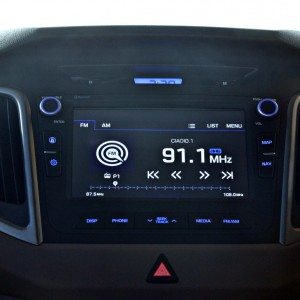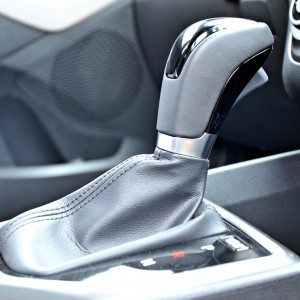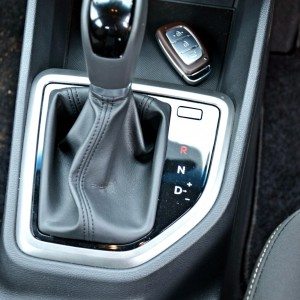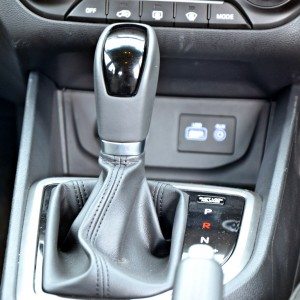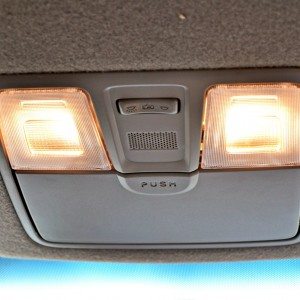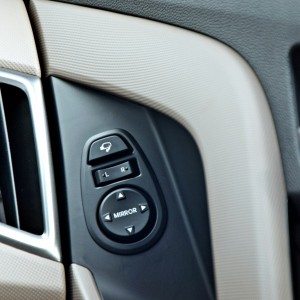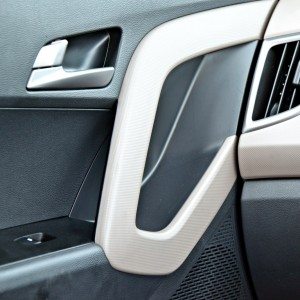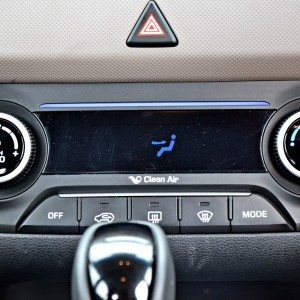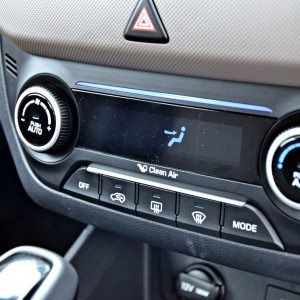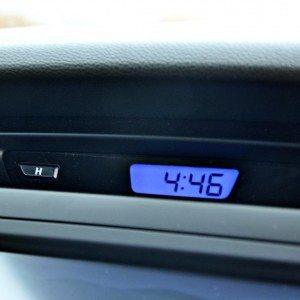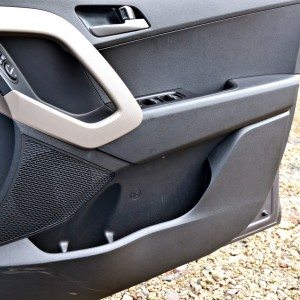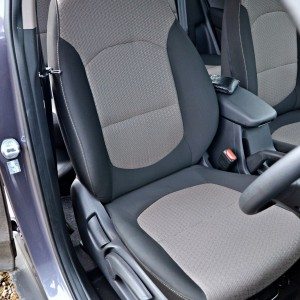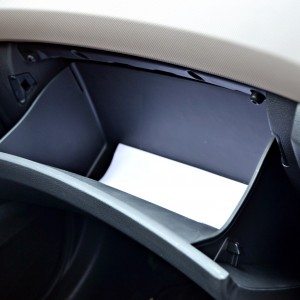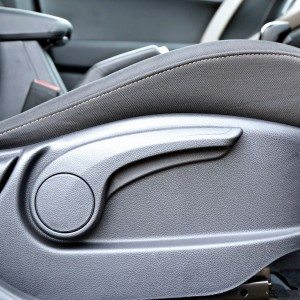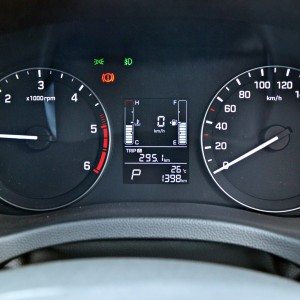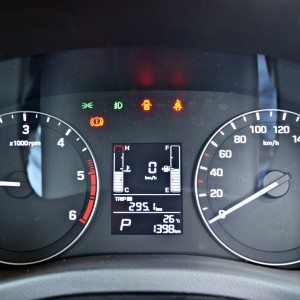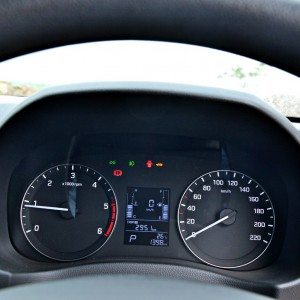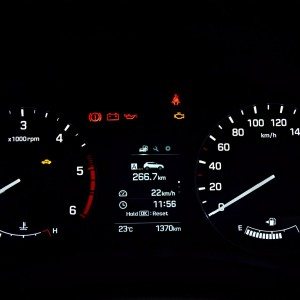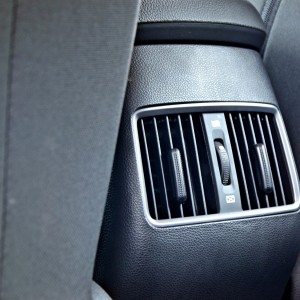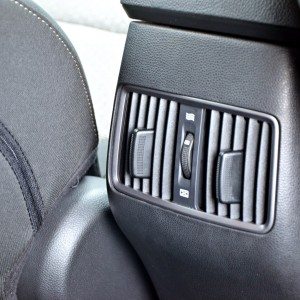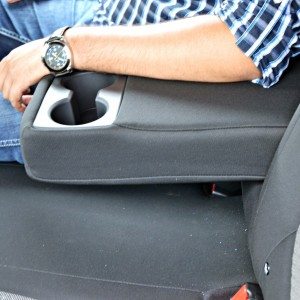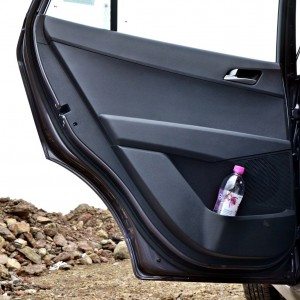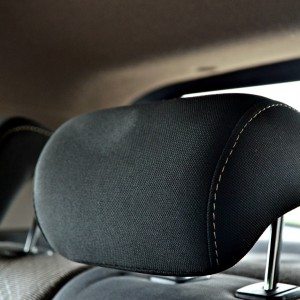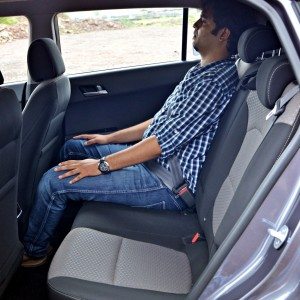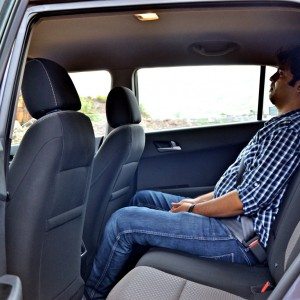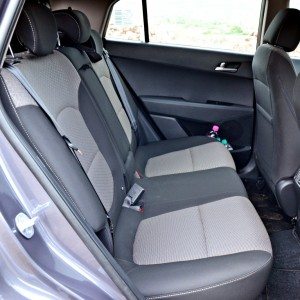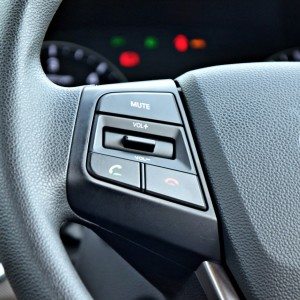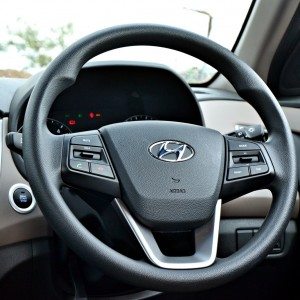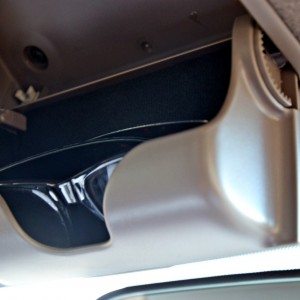They showed us a presentation, where a fictional character called Sameer was introduced. Sameer is relatively young, say about 28-35 years old, is an MBA, and married to an MBA. More importantly, he is an executive, who gets his fat pay cheque cashed at the American bank that’s a few blocks away from his spanking new 2-BHK apartment, who’re toadying to him for that third credit card.
As he mulls about the credit card, a “big” car pulls next to his premium hatchback, invoking desire. That car is the Hyundai Creta. Sameer delineates an entire generation of young Indian executives who’re rapidly climbing up the corporate ladder, and in the meanwhile, filling up their personal coffers. The Creta delineates a type of vehicle that’s “trending” in the Indian market, something that aspiring, young, white collared executives desire for. Amongst others, the Creta is primarily targeted at folks like Sameer, and their wives.
A car with authoritative looks, a powerful, yet efficient engine, cool features to brag about, refined and spacious interiors – that’s all the car they’ll ever need, at least for a while. A car that shifts gears by itself is probably all the car their wives will need. Welcome to the Creta life. Hyundai reckons that the aforementioned factors are the key buying factors for the average Indian SUV buyer.
The SUV segment is the fastest growing in India. Industry forecasts show a 20 percent YoY growth in 2017. In fact, a spiky 41-percent growth was recorded in 2015 alone, as compared to 2014. Currently SUVs account for about 14% of the total market share. Hyundai reckons a 41% growth in 2016-17 as compared to 2015 and last year. That’s exactly where the Creta fits in for Hyundai.
Design & Styling
The Creta’s design benefits from Hyundai’s Fluidic Sculpture 2.0 philosophy. We took a long, hard stare and concluded that there’s not much of fluidity to the design per se. It is, in fact, sharp, and even crisp in places. The Creta isn’t handsome in the classical sense, but in an Indian setting, it does have a powerful presence.
The front end is arguably the best bit. The trapezoidal, triple slat, chrome grille is a nod to its bigger brother – the Santa Fe. The sharply styled headlamps are swept back a fair bit, almost till the middle of the front wheel arch. Their clusters are populated with projector illumination with cornering lamps and LED daytime signature.
The front bumper has a raised, 3D-effect element that runs throughout. Positioned on either side of it are vertically aligned fog lamps, while the middle section is taken up by a large, slatted air dam. Positioned below it is a brushed silver finished scuff plate. A width of 1780 mm makes the Creta wider than the Ecosport (1765 mm), but slimmer than the Duster (1822 mm).
It looks rather tall in profile, but that’s primarily due to the high rising beltline and the slim windows. In fact, at 1630 mm high, the Creta is the shorter than both the Duster (1695 mm) and Ecosport (1708 mm). Only the XUV500 stands taller at 1785mm.
The glasshouse gets the wraparound effect, thanks to A-pillars finished in piano black. The clamshell like roof merges into the thick C-pillars – the Creta doesn’t have a D; one of the few SUVs to do so. The Creta will be 4270 mm long, which makes it longer than the Ecosport (3999 mm), but less lengthy than the Duster (4315 mm).
The big, flared arches feature black plastic trim, while the 17-inch, “diamond cut” five-spoke alloy wheels fill them up nice and tight. All variants lower than SX (O) come with 16-inch, five-spoke wheels with a twin spoke design.
Do not judge a book by its cover though, as the Creta has a class leading drag co-efficient of just 0 .36, as compared to the Duster’s 0.42, and Ecosport’s 0.37. What that means is the Creta will slither through the air more efficiently, saving up fuel and improving high speed stability. Elements like the front windscreen rake, front bumper lip, sloping roof and engine room undercover contribute to the cause.
The back is the tallest angle to view the Creta from, and also the least exciting. It’s got some nice looking, horizontal tail lamps, an India-specific chrome garnish over the number plate, and its second scuff plate. The rear bumper sports a couple of reflectors on either side, which open into faux intakes.
The sloping roofline and the rising beltline result in a small rear glass area. While it looks pretty cool, rearward visibility is affected a tad. A mild rear spoiler, silvery roof rails and a roof-mounted, “shark-fin” antenna round up the finer details.
The upswept headlamps looks smart, and combine projector illumination with static bending.
L-shaped DRL signature gives the Creta an unique visual identity in its segment.
The bold, trapezoidal grille gets three slats highlighted in chrome.
The front bumper lip is one one of the key contributors to the Creta’s low drag co-efficient figure.
Vertically aligned foglamps look the part; and dutifully dissipate the gloom ahead.
Chunky wheel arch trim is a cool touch; also doubles up as cladding.
Tail lamps somewhat mirror the head lamp’s shape; but don’t get LED illumination.
India-specific chrome garnish above the registration plate recess.
Compact rear window thwarts rear visibility; but only just.
No prizes for guessing why it’s called a “shark-fin” antenna.
The hip, yet functional roof rails are finished in dull silver.
The A-pillars are done up in piano black; while the turn indicators are integrated into the ORVMs.
The Creta rides on Goodyear Assurance, 205/60 tubeless tires wrapped around 16-inch alloy wheels; top end SX (O) variant gets 17-inch wheels mated to fatter 215/60 rubber.
Interior and features
A 2590mm wheelbase means that the Creta’s interiors are genuinely roomy and spacious. The seating position is high-set, but the high window line somewhat negates that feel. Those used to (wrongly) putting their elbows on the window sill during a relaxed cruise will be a tad disappointed. The window line rises even higher at the back, so for a vertically challenged occupant sitting on the rear seat, the view outside consists partly of black Creta door trim.
View through the large, steeply raked windscreen is generous, but the thick A-pillars are the cause of many a blind spot when negotiating a blind corner or unmanned crossroad. Also, the small rear window also accounts for slightly less vision of what’s happening rearward.
The dashboard gets India-specific dual tone (beige black) coloration, the inclusion of which adheres to Indian tastes and preferences.The dashboard’s beige section, which also extend to the door grab handles, indeed feels premium, both visually and to the touch. However, the surrounding black plastic areas come with a relatively coarse, grainy texture that feels a little cut-price as compared to the rest of the dashboard. It’s still much better than anything else in the segment though.
Highlighting the dashboard design further are brushed silver inserts around the vertically aligned HVAC vents. Perched atop the center console is a subtle hood, which overshadows a digital clock backlit in icy blue. Back to the console, its main highlight has to be the touch enabled 7-inch AVN (Audio Visual Navigation) system, aided by 4 speakers and 2 tweeters.
Fonts and colors used on the AVN system are crisp and contemporary, along with an intuitive interface. The touch response felt satisfactory, and so did the sound quality. The system offers Bluetooth connectivity, smartphone integration, and inbuilt maps for navigation. The screen also displays the feed from the rear view camera, along with guidelines. Lower variants get an optional 5-inch touch screen audio system that features Aux-in, USB, MP3, CD, Bluetooth support with 1 GB internal memory.
The multi-function steering wheel is well contoured and employs tasty brushed silver inserts. Apart from the top end SX (O) variant, which gets a leather wrapped steering wheel, others come with the rough textured plastic rim, which feels a little shabby to the touch. The steering wheel, adjustable for height but not for reach, also has mounted controls for music, cruise and telephony.
The front seats are accommodating and provide decent levels of comfort, with good bolstering holding one in place when the going gets a little winding. The same can’t be said about the rear seat, which, though comfortable, could have done with a little more under thigh support. Seating three abreast is also a bit of a squeeze. It also has a foldable, central armrest with two cup holders and a central headrest
Owing to a flat floor, and the long wheelbase, space at the back is generous, with loads of head-, leg- and shoulder-room. That said, even front is extremely spacious all around, with the front chairs being height adjustable.The SX (O) gets posh, black leather trimmed seats.
Other interior highlights include a front central armrest with storage space, door trims that swallow 1-litre water bottles with ease, front console storage and cup holders, rear AC vents, USB / Aux –in 12V power sockets below the center console, a sunglass holder, rear seats with a 60:40 split, automatic climate control with cluster ionizer and mood bar, smart key with push button start, along with a cavernous boot space with a luggage net.
Nicely contoured, multi-function steering wheel feels great to hold; but grainy texture on rim lacks the premium touch. (SX (O) gets leather wrapped wheel).
The front seats are grippy, well bolstered and snug…
…as well as height adjustable.
Room at the back is adequate, even for people with tall builds (for reference – person shown in the image is 6 feet tall).
The thick C-pillars make their presence felt inside.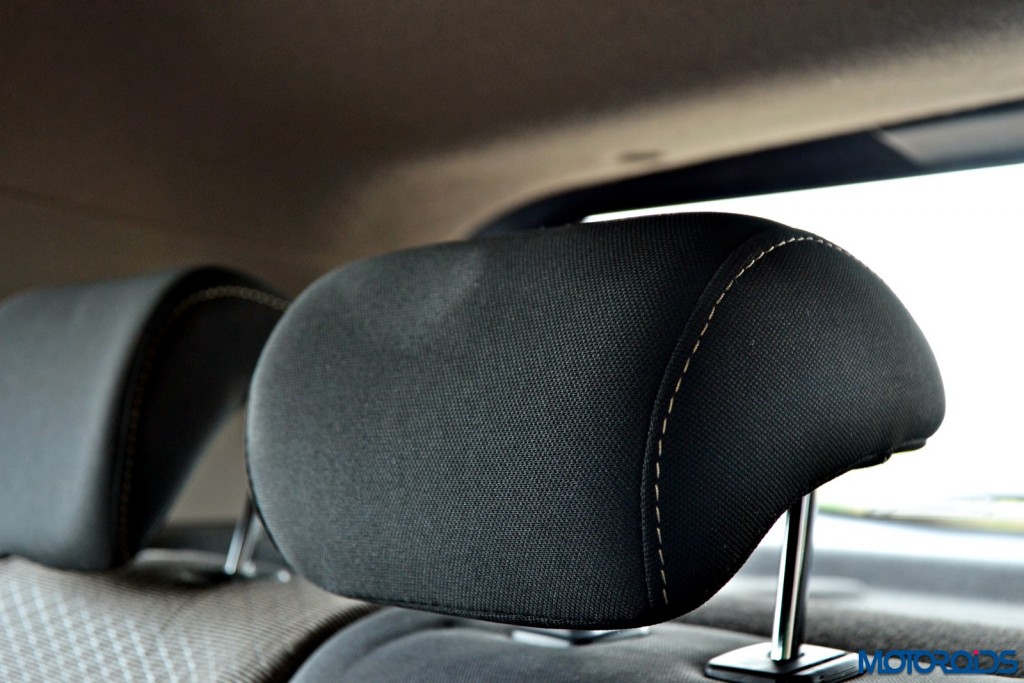 Along with a central armrest, the rear seat gets a head rest for the middle occupant as well.
Along with a central armrest, the rear seat gets a head rest for the middle occupant as well.
Bins in the front and rear door pads gobble up 1-litre bottles with ease.
FATC gets a mood bar, along with an air ioniser which purifies the air inside the cabin.
Instrument cluster in the SX (O) is clear and legible, while the MID shows all the relevant information.
Lower variants get a slightly watered down cluster, but nevertheless, it does the job well.
The good looking A/T shifter is lets one choose between D and manual modes, where a light flick is enough to change cogs.
Before the handy console storage lie a 12V power outlet (joined by one more at the back), along with USB and Aux-in ports.
7-inch AVN screen is touch enabled, and uses crisp, contemporary fonts and pleasing colors.
A sunglass holder is a neat touch.
Rear A/C vents are also an India-specific feature; chills the rear within seconds.
Front cup holders between the seats are amongst the many interior storage spaces in the Creta.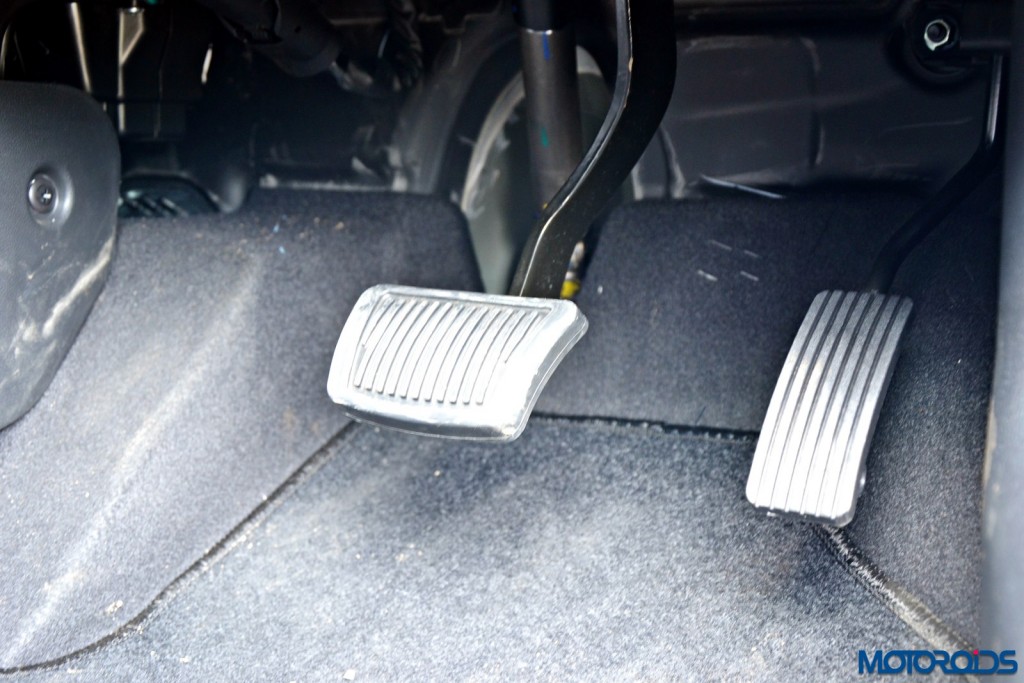 Footwell is well laid out, and the dead pedal is a revelation.
Footwell is well laid out, and the dead pedal is a revelation.
Cavernous glove-box will gulp all your kink-knacks without a hitch.
Build quality, fit and finish are easily one of the best in class.
Boot space is ample enough, and though an official figure on the capacity is still awaited, we reckon it should be around 400-425 litres.
Engines & Performance
The Creta is powered by a choice of two diesel engines (1.4- and 1.6-litre CRDi) and one petrol engine (1.6-litre VTVT). We sampled the 1.6-litre diesel engine, which comes mated to either a 6-speed manual or a 6-speed automatic transmission.
The 4-cylinder, CRDi, turbocharged diesel engine displaces 1582 cc; and develops 128 PS@4000 rpm; along with 26.5 Kgm@1900-2750 rpm. Fuel efficiency is rated at 19.67 km/l* for the MT variant, while the AT variant returns a claimed 17.01 km/l*.
*ARAI figures
The turbocharger employed is a variable geometry one, which aims to reduce turbo lag. The U2 engine also features something called a swirl control valvewhich facilitates swirling motion of air in intake manifold to improve combustion. Then there’s the Variable Intake System (VIS) which controls length/volume of air travel in intake manifold to optimize engine performance.
Thumb the starter button and the Creta wakes up with a distant rumble. Diesel clatter has been well contained and there’s barely any perturbing engine noises filtering through into the well damped cabin. That’s largely due to the anti vibration pads on the floor panel, enhanced tunnel area rigidity, and alloy wheels with increased rigidity.
There are insulators on the dashboard panel and fenders, improved engine mounts, sound deadener coating for road noise reduction, while dual sealing structure for doors and optimized A-pillar garnish shape take care of excessive wind noise. NVH levels are very well contained for its class, and Hyundai India seems to have done their homework well when it comes to refinement, which, we have to agree, is segment leading.
The clutch is incredibly light and the shifts on the 6-speed manual transmission are impeccably smooth – a methodical approach to impress the influx of lady drivers that the Creta is expected to bring in. However, the shift gates are not positioned evenly and there is a possibility for a newbie to miss-shift into third instead of first when making a move from standstill.
VGT notwithstanding, the 1.6 CRDi suffers from inherent turbo lag below 2,000 rpm. Post that, the Creta guns forward with enthusiasm, before the revs reach their 5000 rpm redline. In its band of operations, which lie between 2000-4000 rpm, the Creta performs brilliantly, with a punchy midrange that sees the Creta pick up deceptive speeds that devour highways with long-legged ease. However, in sticky traffic, a bit of linearity to the power delivery would have been appreciated, as low end responses are not exactly eager. The handy Hill Assist Controls prevents the Creta from rolling backwards (~2 seconds) on inclines more than 4.6 degrees steep.
But wait, there’s an automatic gearbox to settle things in traffic. The box is commendably smooth and offers a non-intrusive driving experience. Shifts are rapid and provide nice company to the engine. In its automatic avatar, even the Creta’s turbo lag isn’t quite evident. There’s also a manual mode, but there are no paddle shifters, which is a bit of a buzz-kill, considering even the Honda Jazz hatchback has them now. Though not as lightening quick as some of the new German dual clutch transmissions, the new 6 speed auto really doesn’t leave anything to complain about for day-to-day, real-world usage.
Ride, handling and braking
The suspension setup in the Creta has been tuned for a smooth and comfortable ride quality, which it delivers in dollops. The ride is somewhat cushy and makes a mockery of small potholes and undulations on the road. The Creta instills tremendous confidence over bad patches of road – just the way Sameer and his wife would like it.
The Hydro Rebound stoppers in the front checks rebound in the McPherson strut suspension setup, while the rear gets a simple, torsion beam setup. A high ground clearance of 190 mm makes it a tailor made to devour Indian roads.
The Creta wasn’t built to attack corners, but its effervescence around them took us by surprise. The rigid body shell responds quickly to lateral movements, and the Creta is more than willing to change directions, with confidence that’s unlike any mainstream Hyundai sold in the country. Also, the 215 section tires on the SX (O) have quite the grip levels when the Creta is flicked unceremoniously. Only when pushed savagely hard, the car starts to wash out wide due to under-steer.
Agreed, the soft suspension set-up means that it rolls and pitches more than, say, a rally bred Renault Duster, but the Creta can be enjoyed on a spirited drive.We’d say that Hyundai have got the ride and handling balance just right with the Creta. High speed stability is also commendable, and coupled with the stellar NVH levels; mean that this Hyundai is a very capable, fast paced cruiser.
Pity the steering wheel doesn’t keep up. It’s incredibly light at low speed, while as speeds rise, the feedback through the wheel becomes annoyingly wooden, with absolutely no sense filtering through, regarding the whereabouts of the front end. It also requires minor corrections when the going gets brisk. Hyundai claims to have employed a torque and angle sensor to the steering rack to improve feedback, but it’s still a dud in our books.
The Creta hauls its anchors with the help of disc brakes up front and drums at the back; influenced by ABS and EBD. Under hard braking from three digit speeds, the Cretas squirms a little, with inputs from the steering wheel needed to stabilize the car. That said, braking is confident inspiring and crisp, with a very progressive pedal feel.
Safety
Along with as many as six airbags, the Creta is built around a ‘Hive’ structure, which takes inspiration from the inherent strength of a honeycomb structure.
The Korean maker says that the ring shaped frames applied at B-Pillar, C-Pillar and engine bay helps to achieve high body rigidity, improved durability and crash performance.
The ring frame structure realizes a significant increase in body stiffness, which contributes to more precise handling while maintaining excellent ride quality.
The ‘Hive’ structure uses Advanced High Strength Steel (AHSS) & Ultra High Strength Steel (UHSS) for enhanced body endurance, corrosion durability and lighter body for better mileage.
Hyundai claim an improved crash performance with addition of dash cross members, while use of larger diameter weld joints & use of reinforced side members having Tailor Welded Blanks (TWB) on door panels for improved body strength
The front end gets a modular structure to reduce the maintenance cost. Other safety equipment includes Vehicle Stability Management (VSM) and Electronic Stability Control (ESC).
Summing it up
Does the Hyundai Creta live up to its hype?
Yes, it does.
To start off, it’s entering a burgeoning segment, with a badge that India loves to travel with.
The Creta has the authoritative looks that clearly appease its intended audience.
It’s well-refined, spacious and well-built from the inside. The upper half of second row does tend to feel a little claustrophobic with five people on board.
The features on offer fit the bill.
The ride quality is very comfortable for the terrain it looks to deal with; and even the dynamics betray the badge somewhat. The steering feedback still needs to be fine tuned though.
The 1.6-litre diesel engine is all muscles when in its band, but still suffers from inherent lag.
The automatic gearbox is the icing on the Creta cake. What’s more, it’s a smooth operator, and is sure to impress the ladies the most.
Hyundai also claims that the cost of ownership is the lowest in class. Susceptible parts prone to damage, like the front bumper, clutch assembly, tail lamp etc. will also cost the least when you order from a spare. Those headlamps look pretty expensive though.
The Creta achieves exactly what Hyundai India had wanted it to; feed the young Indian entrepreneurs and executives the vehicle that they want. With introductory prices starting at INR 8.59 lakh, it makes the Creta a little more hard-to-get than expected, but that hasn’t stopped 20,000 of them to book the car already. If there is something that we find missing, it is perhaps the lack of 4X4, even as an option even on the top most variant.
The Creta range will spawn five trim levels – Base, S, S+, SX, SX+ and SX(O). While the The Base trim will be available only with the 1.6-liter VTVT and 1.4-liter CRDi variants, S and S+ trims will solely be limited to the 1.4-liter CRDi variant. A total of 7 exterior colour options are available – Polar White, Sleek Silver, Pearl Beige, Stardust, Mystic Blue, Red Passion and Phantom Black. Hyundai is offering 3 years of unlimited warranty on the car.
| Engine | Capacity (cc) | Maximum Power (ps/rpm) | Maximum Torque (kgm/rpm) |
| 1.6 Gamma Dual VTVT Petrol engine | 1,591 | 123 / 6,400 | 15.4 / 4,850 |
| 1.6 U2 CRDi VGT (MT/AT) Diesel engine | 1,582 | 128 / 4,000 | 26.5 / 1,900-2,750 |
| 1.4 U2 CRDi Diesel engine | 1,396 | 90 / 4,000 | 22.4 / 1500-2,750 |
Mileage
| Engine | ARAI (Certified Figures) |
| 1.6 Gamma Dual VTVT Petrol engine | 15.29 kmpl |
| 1.6 U2 CRDi VGT (MT/AT) Diesel engine | 19.67 kmpl (MT)17.01 kmpl (AT) |
| 1.4 U2 CRDi Diesel engine | 21.38 kmpl |
Dimensions
| Length x Width x Height | 4,270 x 1,780 x 1,630 mm |
| Wheelbase | 2,590 mm |
| Max Tyre | 215/ 60 R17 |
| Ground clearance (Unladen) | 190 mm |
Ex-showroom Delhi prices in INR:
| L | S | S+ | SX | SX+ | SX (O) | |
| 1.6 PL | 859,558 | 957,062 | 1,119,548 | |||
| 1.4 DSL | 946,939 | 1,042,225 | 1,145,030 | |||
| 1.6 DSL | 1,159,971 | 1,267,770 | 1,360,156 | |||
| 1,357,770 (AT) |

